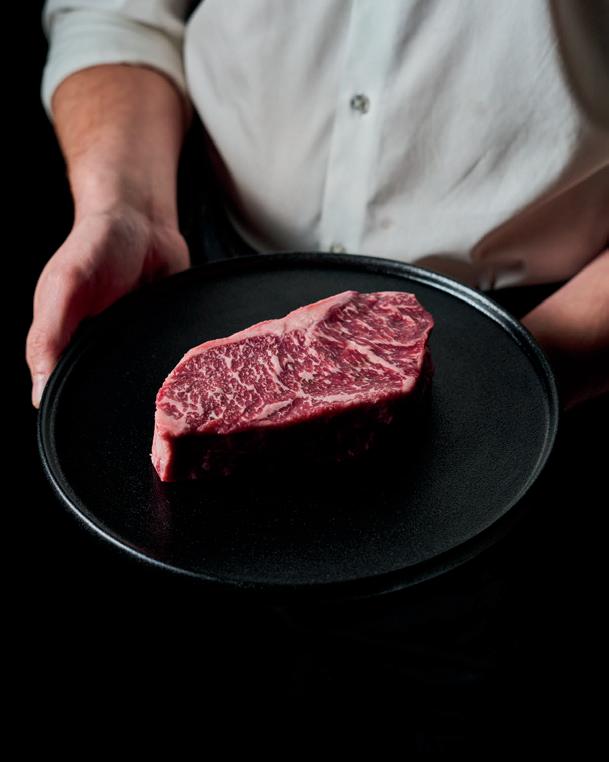ATOMIC COWBOY GOES GALACTIC
THE WILD WORLD OF FORAGING

+ THE FSR 30 REPORT RANKS TOP FULL-SERVICE CHAINS
THE Y2K NOSTALGIA BAR MOTHERHOOD AND MENU MAGIC

ATOMIC COWBOY GOES GALACTIC
THE WILD WORLD OF FORAGING

+ THE FSR 30 REPORT RANKS TOP FULL-SERVICE CHAINS
THE Y2K NOSTALGIA BAR MOTHERHOOD AND MENU MAGIC
THE DAYTIME LEADER CONTINUES WINNING OVER GUESTS FOR THE RIGHT REASONS

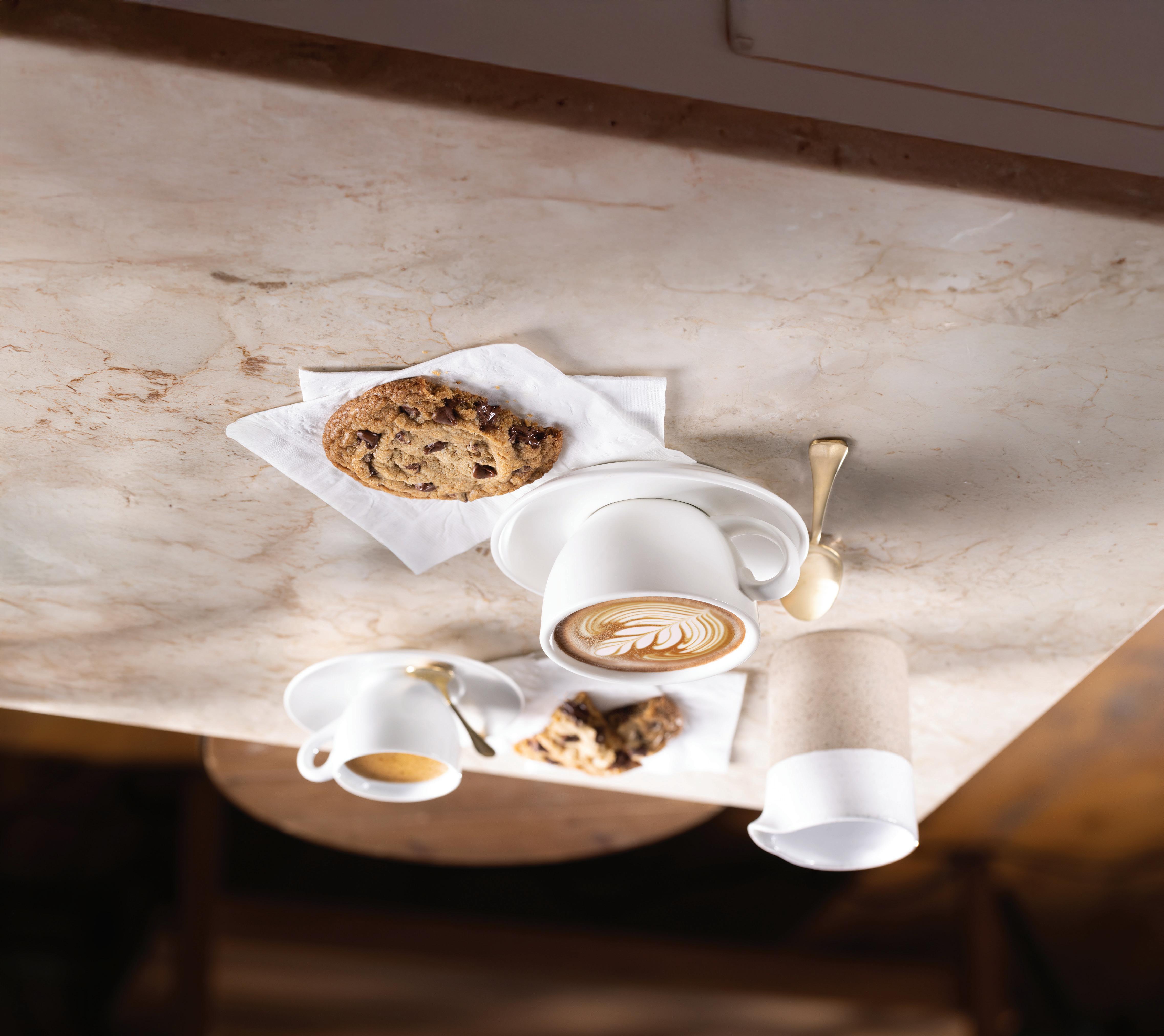
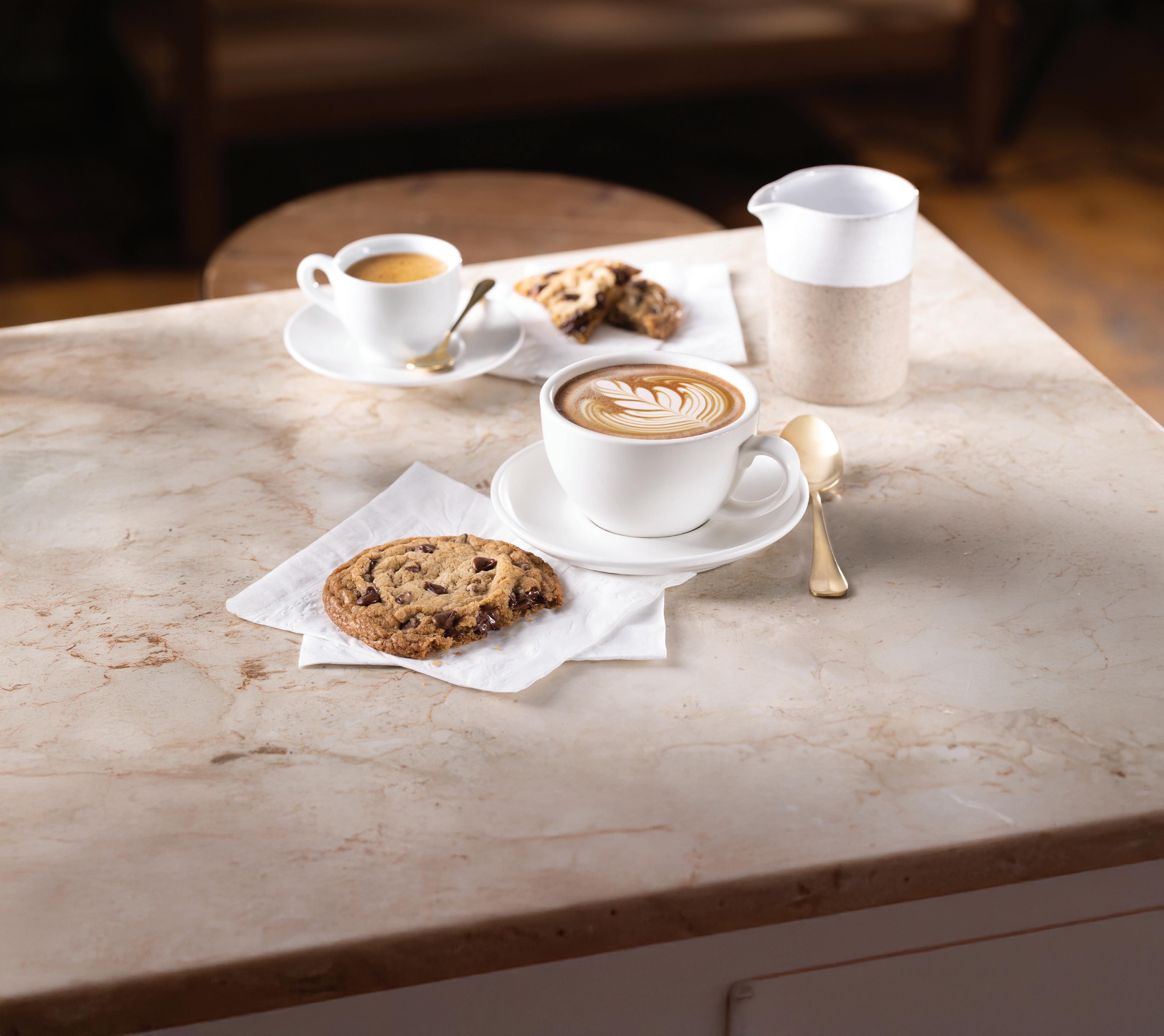

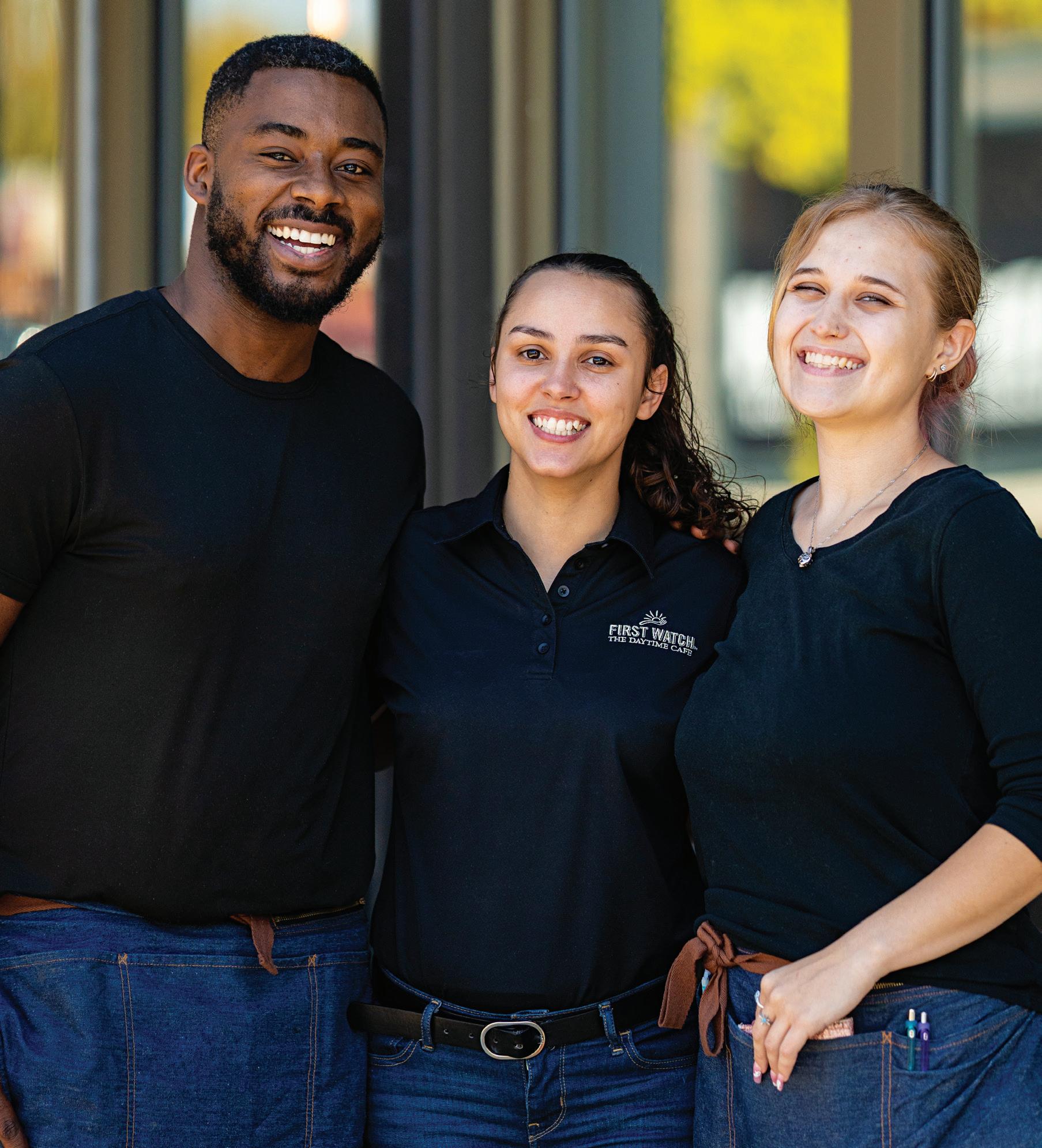
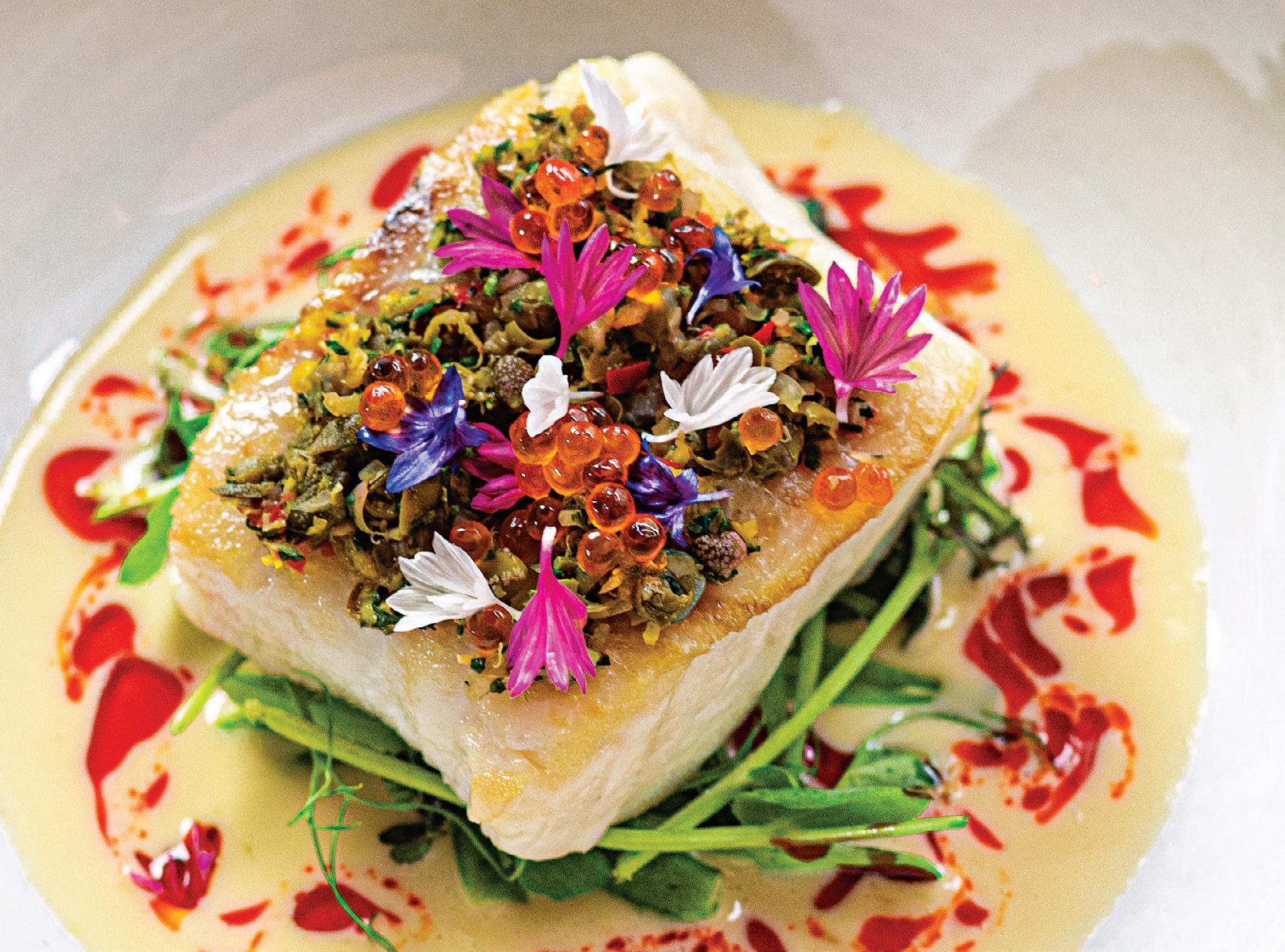
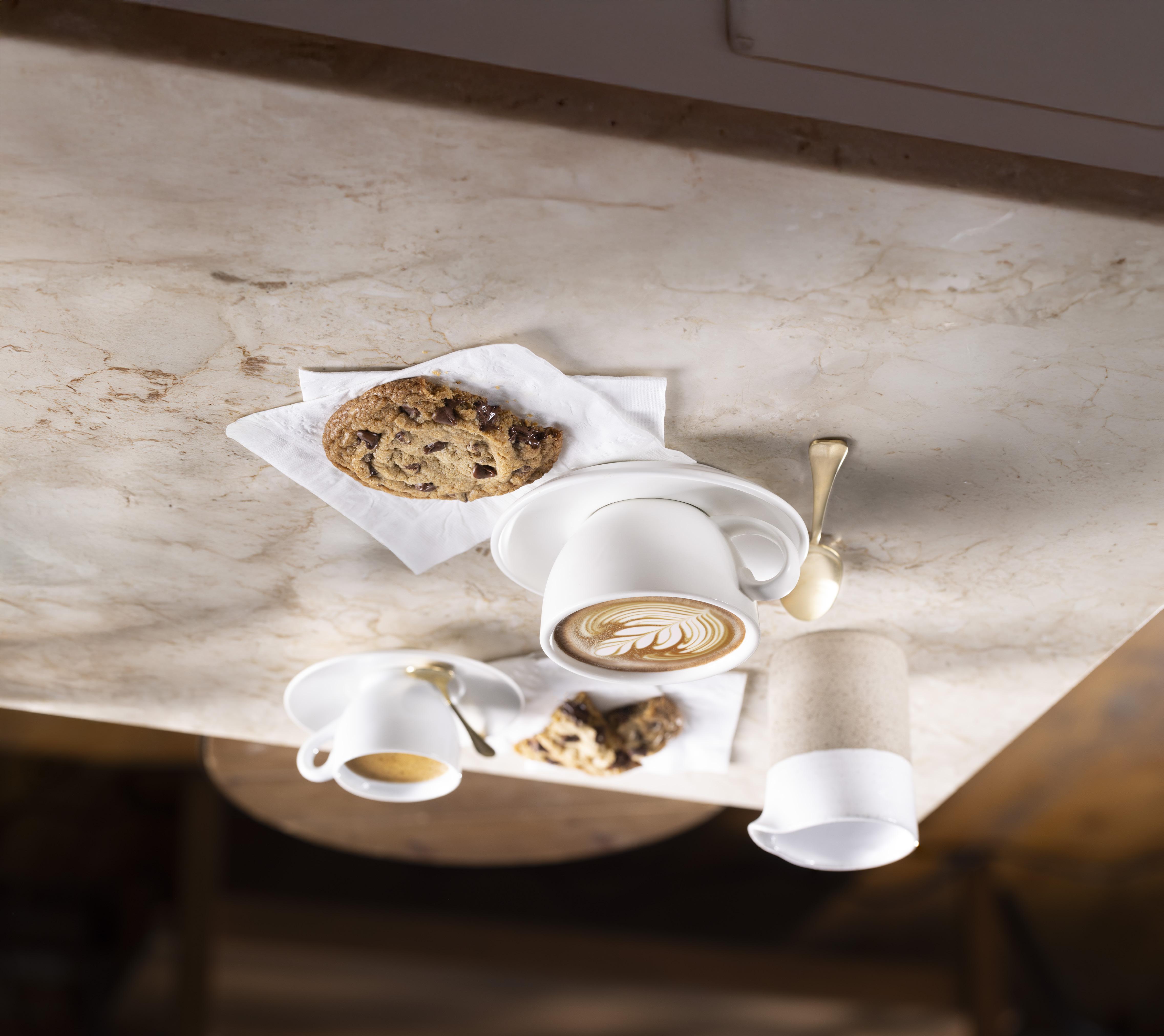
The increasingly popular daytime brand continues to lead with its values rooted in ‘Unreasonable Hospitality,’ and a long-term mindset of rewarding and winning over guests for the right reasons.
In partnership with Datassential, The FSR 30 returns for the third year and highlights the largest fullservice restaurant chains in the U.S.
11 From Costa Rican Roots to Four Seasons
Yudith Bustos Taleno is the new executive pastry chef at Adorn Bar & Restaurant in the Four Seasons Chicago—but her journey started on a small farm in Costa Rica.
From the wild frontier of Alaska to the quiet lakes of Michigan, these chefs are reshaping menus with local foraging at the forefront.
The era of boy bands and dial-up internet is back in style, and bars and restaurants are finding ways to capitalize—like Zero Lounge.

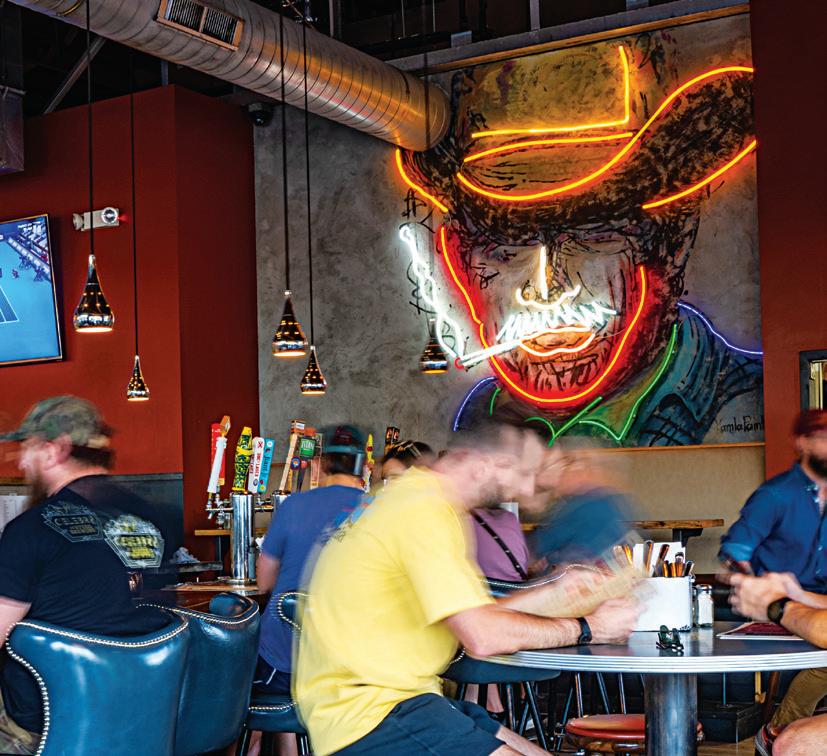
37 Atomic Cowboy Goes Galactic
7 The Chicken N Pickle Pivot
From hefty construction price tags to question marks around tariffs, Chicken N Pickle has made the decision to pivot to an acquisition strategy to fuel its next growth phase.
8 The Search Shift is On
Restaurants are quietly losing online visibility—and many aren’t even aware of it, according to SOCi’s 2025 Consumer Behavior Index.
OF HOUSE
35 Motherhood, Mixology, &
WOMEN IN LEADERSHIP Firebirds veteran Lisa Kozloff reflects on 25 years of brunch, babies, and bold new menu ideas—from refreshing new cocktails to expanding the back-bar options by 46%.
ON THE RISE Open for 18 hours, the dive-bar-turnedbustling restaurant with three concepts under one roof features southern-style biscuits, NY-style pizza, and Colorado-style beer.
BEHIND THE SCENES Under the leadership of president and CEO Daniel DeLeon, the Florida-based diner concept has built a workplace culture rooted in empathy, opportunity, and community. ALSO IN THIS ISSUE
4 Editor’s Welcome 39 Advertising Index
EDITORIAL
VP, EDITORIAL DIRECTOR: FOOD, RETAIL, & HOSPITALITY Danny Klein dklein@wtwhmedia.com
FSR EDITOR Callie Evergreen cevergreen@wtwhmedia.com
QSR EDITOR Ben Coley bcoley@wtwhmedia.com
ASSOCIATE EDITOR Sam Danley sdanley@wtwhmedia.com
ASSOCIATE EDITOR Satyne Doner sdoner@wtwhmedia.com
SVP, AUDIENCE GROWTH Greg Sanders gsanders@wtwhmedia.com
CONTENT STUDIO
VP, CONTENT STUDIO Peggy Carouthers pcarouthers@wtwhmedia.com
WRITER, CONTENT STUDIO Drew Filipski dfilipski@wtwhmedia.com
WRITER, CONTENT STUDIO Ya’el McLoud ymcloud@wtwhmedia.com
WRITER, CONTENT STUDIO Abby Winterburn awinterburn@wtwhmedia.com
DESIGN
ART DIRECTOR Erica Naftolowitz enaftolowitz@wtwhmedia.com

® SALES & BUSINESS DEVELOPMENT
VP, BUSINESS DEVELOPMENT Eugene Drezner 919-945-0705 edrezner@wtwhmedia.com
NATIONAL SALES DIRECTOR Amber Dobsovic 757-637-8673 adobsovic@wtwhmedia.com
NATIONAL SALES DIRECTOR Edward Richards 216-956-6636 erichards@wtwhmedia.com
NATIONAL SALES MANAGER Tom Boyles 662-607-5249 tboyles@wtwhmedia.com
CUSTOMER SERVICE
REPRESENTATIVE Tracy Doubts 919-945-0704 tdoubts@wtwhmedia.com
ADMINISTRATION
CEO Matt Logan mlogan@wtwhmedia.com 919-945-0704 www.fsrmagazine.com/subscribe
FSR is provided without charge upon request to individuals residing in the U.S. who meet subscription criteria as set forth by the publisher.
REPRINTS
THE YGS GROUP 800-290-5460 fax: 717-825-2150 fsrmagazine@theygsgroup.com
Sponsored content in this magazine is provided to the represented company for a fee. Such content is written to be informational and nonpromotional. Comments welcomed at sponsoredcontent@ fsrmagazine.com.
FOUNDER Webb C. Howell
LinkedIn.com/company/ FSR-magazine
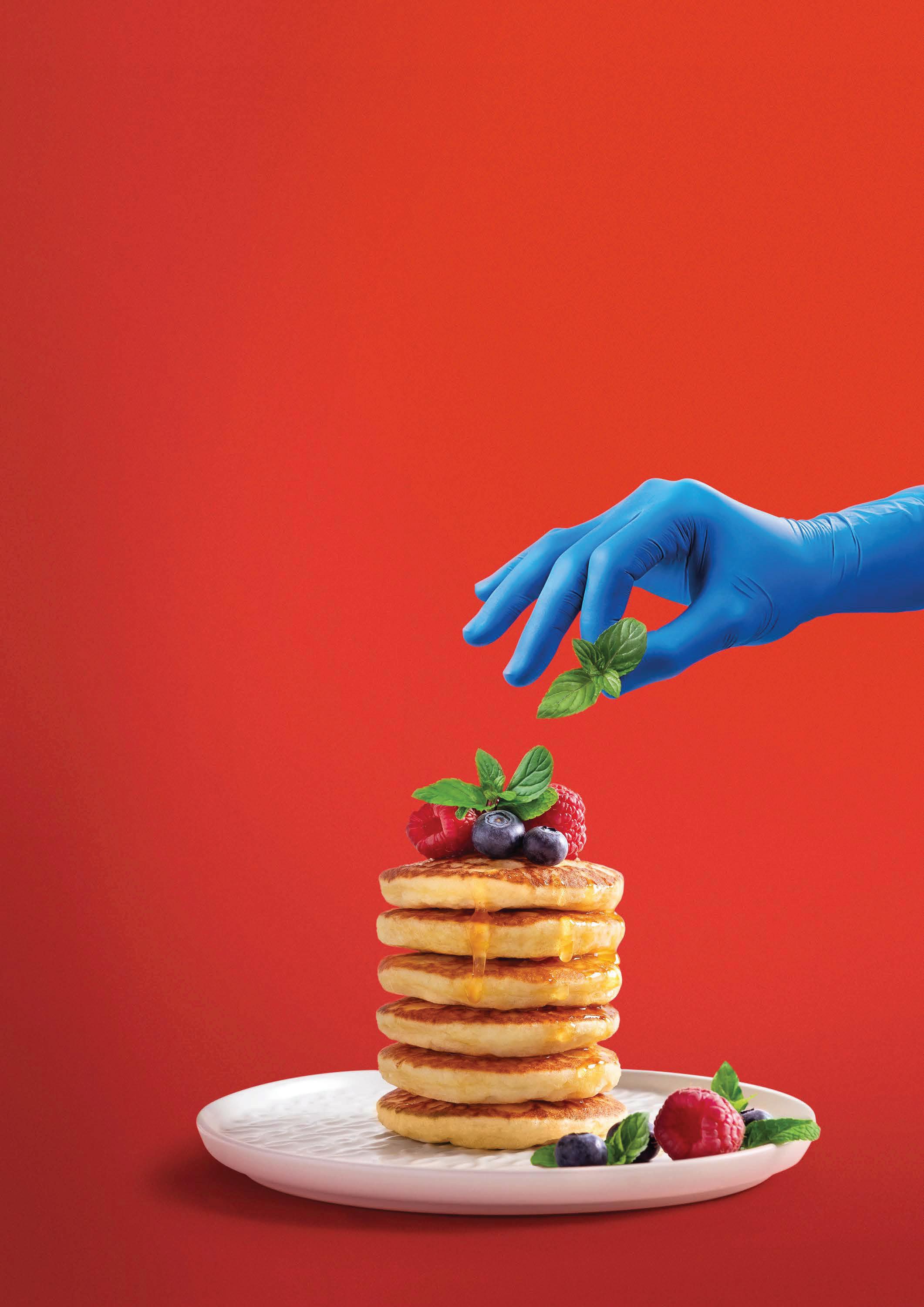

WE LIVE IN A WORLD and society that glamorizes ego and harsh, mean methods to maintain control, with false narratives that say things like “nice guys finish last” and “empathy is weakness.” But when we choose to be kind, it showcases a different, more potent kind of power—one that has been essential to the survival of our species as we’ve formed communities to weather each storm this planet throws at us.
I was reminded of that in early July when Tropical Storm Chantal hit central North Carolina and flooded my apartment complex, and my neighbors and I came together to help each other out, from wading through the floodwaters to evacuate a sweet one-eyed dog to bringing food to those who were trapped by trees that had fallen on our cars. Thankfully, everyone was safe, and extra help soon arrived to deal with the aftermath, but it was a great reminder that nothing can replace community and compassion—two things humans will always crave, no matter how much AI and automation come into play.
First Watch also knows this, and has embodied holistic hospitality from the start and carried these ideals through its explosive growth. Chief brand officer Matt Eisenacher says it best: “If you made someone smile, you know you’ve done your job.” You can read more about how the NextGen Casual concept continues treating guests and employees with “Unreasonable Hospitality” even in uncertain times on PAGE 26
Our August issue includes other stories of how this industry always shows up for each other, like how pastry chef Yudith Bustos Taleno mentors the next generation of chefs on PAGE 11, and how Grumpy’s CEO Daniel DeLeon has built a workplace culture rooted in empathy, opportunity, and community on PAGE 40. We’ve also got chefs who are treating the earth with kindness and prioritizing sustainability and local foraging on PAGE 16, from the wild frontier of Alaska to the quiet lakes of Michigan and the earthy woodlands of Washington.
Ultimately, the choices we make individually and collectively every day have impacts for generations to come, and I for one will stand behind those who continue to care for each other and their communities with warmth and love. Your call to action? Treat people with kindness, and try to make someone smile today—then rinse and repeat.

Callie Evergreen EDITOR

cevergreen@wtwhmedia.com FSRmag @FSRmagazine
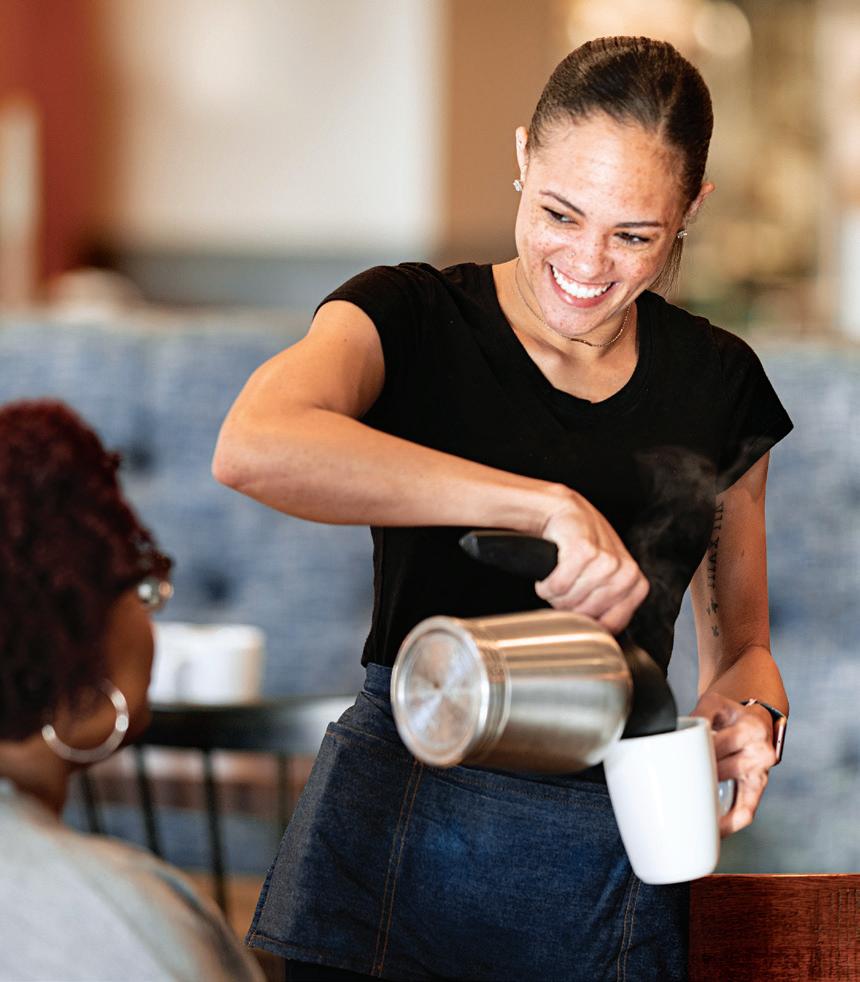
Our August cover star is First Watch a brand that has been around for 42 years, founded on the values of being kind, rolling up your sleeves, and standing shoulder-to-shoulder. That premise hasn’t changed over the decades. In fact, the breakfast-brunch leader continues to show how the principles laid out in “Unreasonable Hospitality” (The New York Times bestselling book by Will Guidara) are drivers to success, from going above and beyond and anticipating needs to fostering genuine human connection through service.
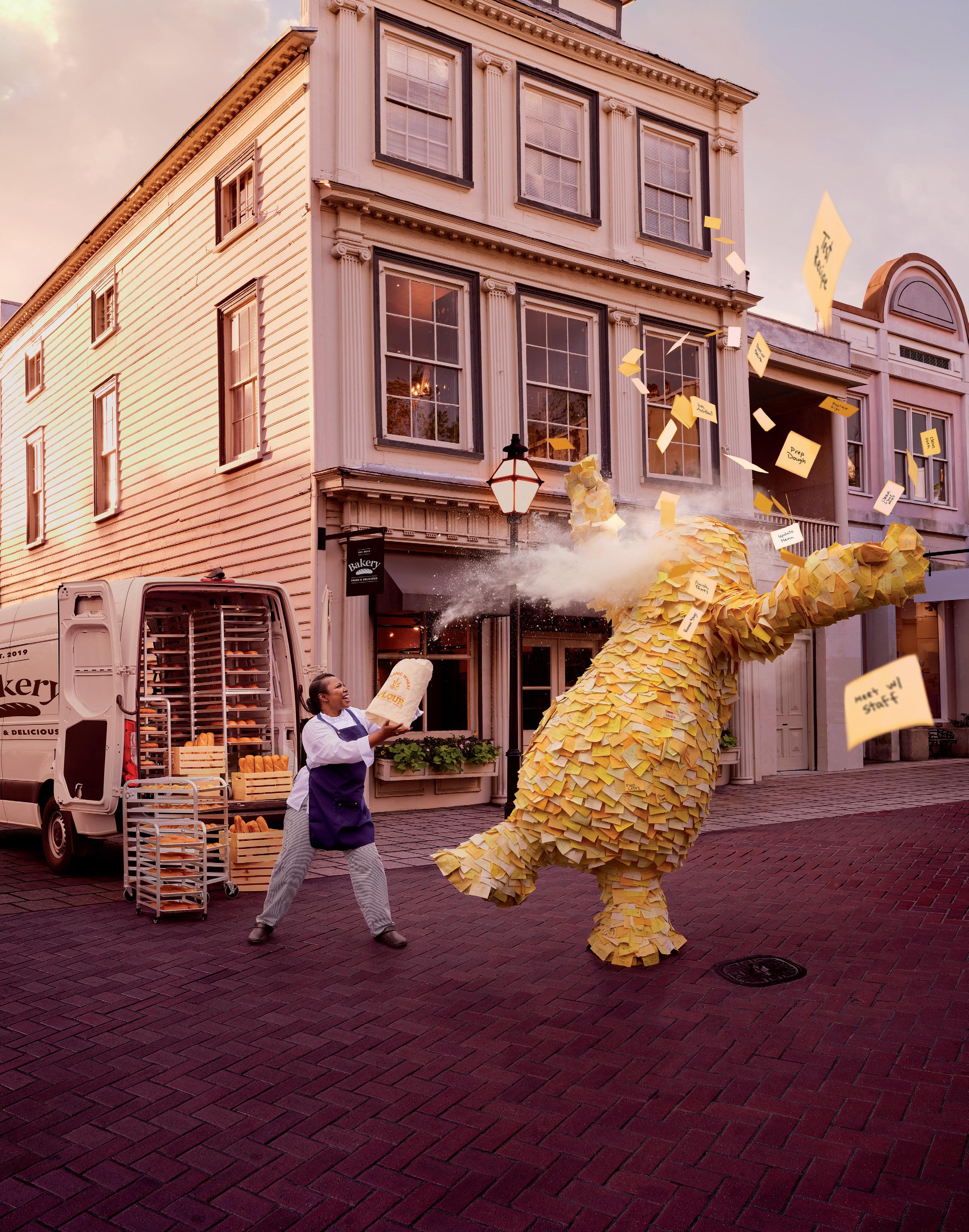

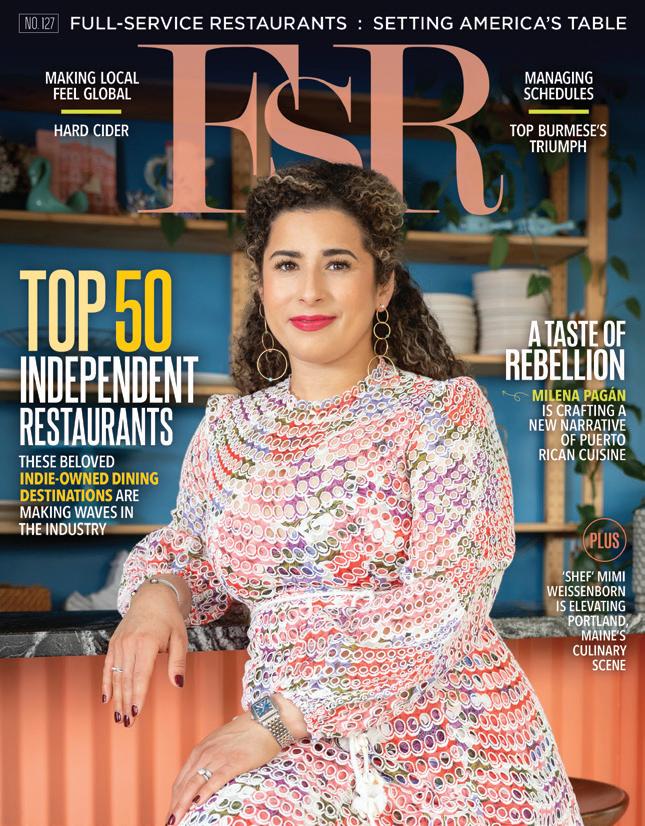
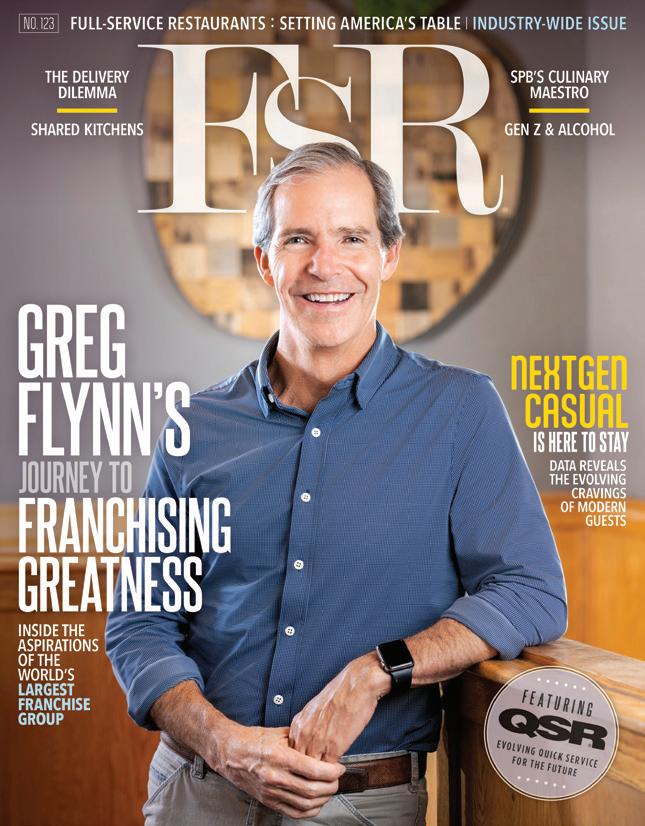
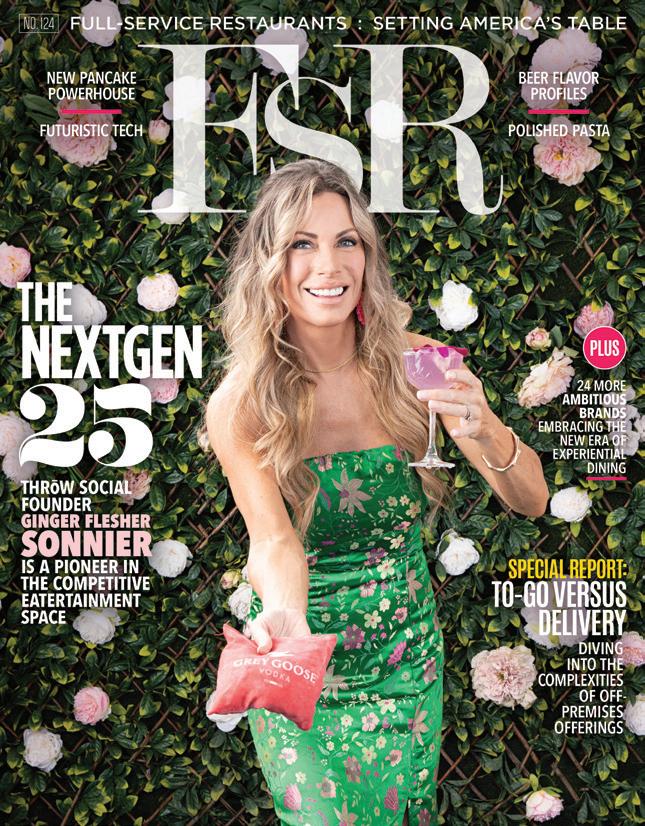
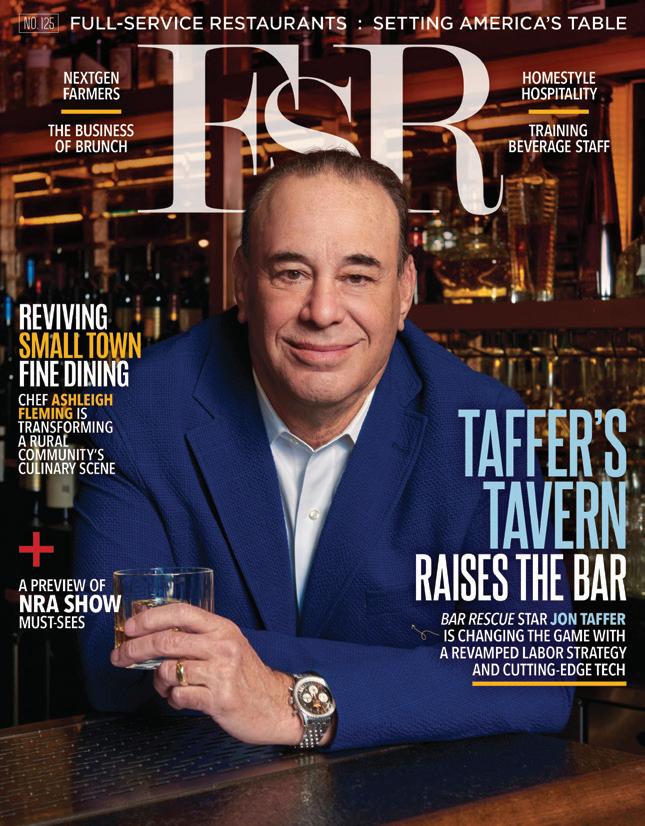
You should know—you’re one of them.
You’re what we at FSR like to call “tablesetters.”
You make things happen in the restaurant industry.
You’re an innovator on your menu and in all aspects of your operation.
You’re watched and emulated by other restaurateurs.
You lead the markets you operate in.
These are the characteristics that make a tablesetter. And FSR is the trusted source of information for these most influential chefs and restaurateurs in the industry. Request your free subscription today by visiting FSRmagazine.com/subscribe
Restaurants : Setting America’s Table
With 13 locations, Chicken N Pickle is targeting markets in Phoenix, Dallas, and Denver, and is looking to expand via acquisitions of similar social entertainment concepts.

BY BEN COLEY
Acquisitions will fuel the brand’s next growth phase.
PICKLEBALL IS EVERYWHERE, and Chicken N Pickle president Kelli Alldredge can see that from the growth of the brand, let alone all of the competitors across the country. There were nearly 20 million pickleball players in the U.S. last year, up 45.8 percent year-over-year, according to the SFIA Topline Participation Report for 2025.
“I think back to 2018 when I started with the company, most of my conversations were explaining pickleball. Let me email you. We have a YouTube video that was terribly done,” Alldredge jokes. “But there’s just so much growth in the sport of pickleball.”
Chicken N Pickle loves pickleball as much
as anyone, and its venues show that passion. A recent opening in Allen, Texas, features over 55,000 square feet, including two dining areas, a sports bar, six indoor and two outdoor pickleball courts, beer gardens, and cornhole, battleship, giant Jenga and other yard games.
With that comes a hefty construction price tag. With tariffs comes even more question marks. The growing list of unknowns has pushed Chicken N Pickle to make a pivot. The brand still plans to open its 13th outlet in Thornton, Colorado, next week. But beyond that, the chain will look to expand via acquisition of similar social entertainment concepts.
“Tariffs and cost of construction— the world’s a little bit of a crazy place right now, so we decided to get that 13th one open, and take a step back,” says president Kelli Alldredge. “I think Chicken N Pickle has done a really good job making this look easy. Like, hey, I can build
a restaurant and pickleball courts and see if a merger or acquisition is a possibility. It’s really cool being a front runner in a space. We’ve never had this thought because no one like us really ever existed.”
Chicken N Pickle will consider two options. The first is converting the acquired location into a Chicken N Pickle, similar to what other restaurant chains have done recently (i.e. Twin Peaks converting Smokey Bones, CAVA converting Zoës Kitchen, Great American Cookies converting Nestlé Toll House Café). The other plan would be to coexist as partners.
The brand doesn’t view it as a slowdown. Instead, the company believes there’s opportunity to “grow quicker than we ever have,” Alldredge says. Right now, it typically opens two to four venues per year.
Alldredge says the chain will eye likeminded companies that align with its core values, which are qual-
ity, community, connection, integrity, and authenticity. She adds that Chicken N Pickle will be attracted to brands that create memorable social experiences—whether that’s food, games, or recreations—and holds a shared space that brings customers together. The brand would also love a family-friendly environment and a chef-driven menu, two aspects it emphasizes at every location.
“We’re open to concepts outside of just pickleball too, but we do love our indoor/outdoor space, and we talk a lot internally about being the coolest backyard you never want to leave,” Alldredge says. “We want our guests to come in and really feel like they’re in their best friend’s backyard. Again, it doesn’t only have to be pickleball, but it really is just those concepts that are all about human connection, bringing people together, and creating memories and gathering spaces.”
Restaurants are quietly losing online visibility—and many aren’t even aware of it. According to SOCi’s 2025 Consumer Behavior Index, search impressions for multilocation brands have dropped 10% year-over-year, and the trend is accelerating.
The report highlights a fundamental shift: traditional search strategies are faltering. Nearly 1 in 5 consumers now turn to AI tools like ChatGPT instead of Google, while 73% say they rely on social media to discover and evaluate brands. The real question isn’t just how you rank on Google anymore—it’s whether you’re showing up at all where today’s consumers are actually searching.
As AI and social platforms continue to reshape the digital landscape, restaurants must evolve their marketing strategies to stay discoverable—or risk falling behind.

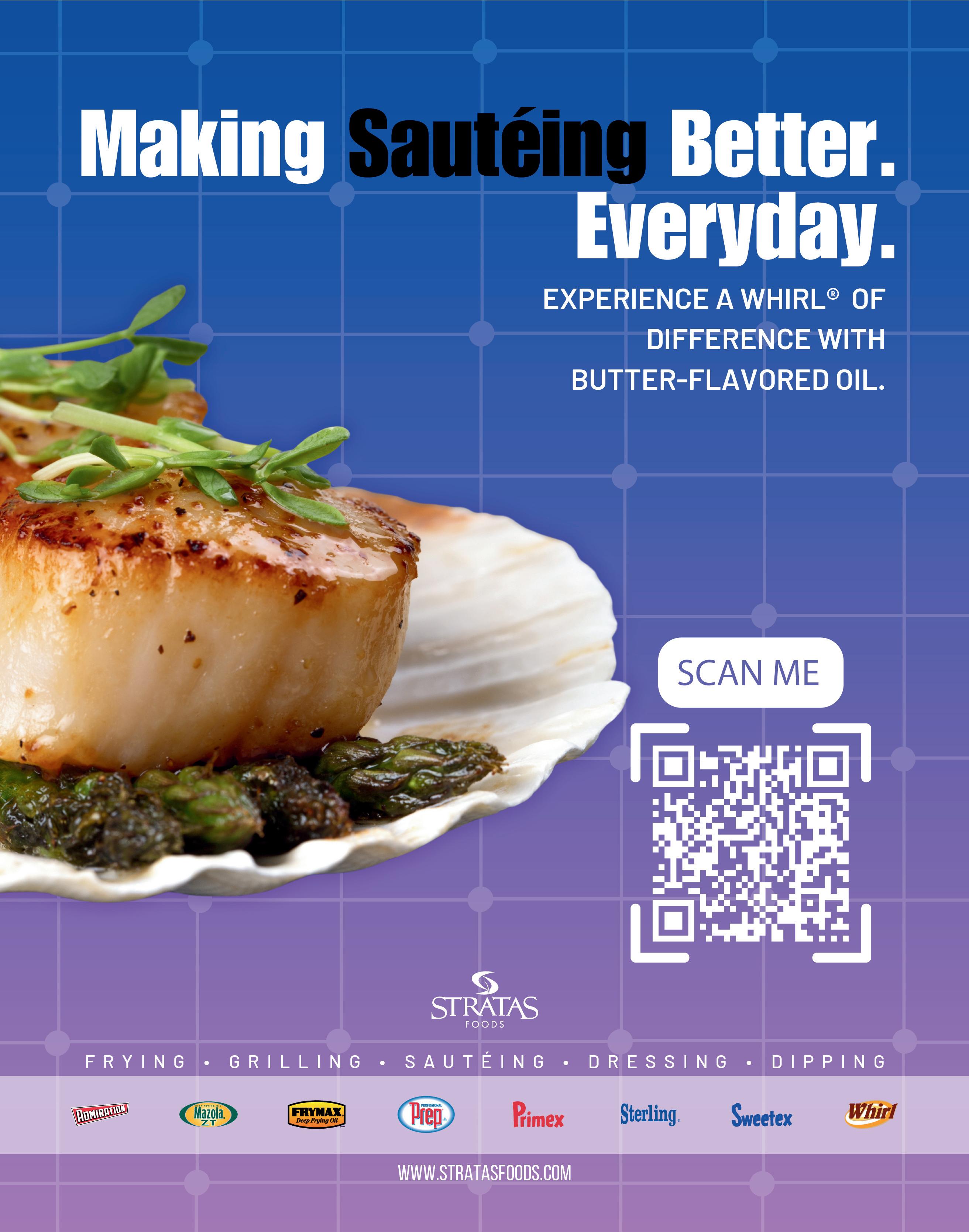


Friends that stay and chat, order more. That’s the power of a Bavarian pretzel from the industryleading Brauhaus Pretzel® brand—it’s the order that starts all other orders. The salty flavor keeps drinks coming, and it’s the perfect size so there’s always room for an entrée or even another app. It’s the perfect centerpiece for friends, family, conversation…and your operation’s profits.
Request your free sample jjsnackfoodservice.com/request-free-samples


may be the newly appointed executive pastry chef at Adorn Bar & Restaurant, located on the seventh floor of the upscale Four Seasons Hotel Chicago—but she’s never forgotten her roots. Her journey started on a small farm in Costa Rica, where she grew up surrounded by cacao bean plantations, tropical fruits, and a family that instilled in her the values of hard work, passion, and creativity that would eventually propel her
through the culinary world.
Growing up on a farm wasn’t just a childhood experience—it became the foundation of her culinary philosophy and source of creativity. “We had everything we needed,” she remembers. “Mango trees, passion fruit, lemons, bananas, coconuts, growing right in our own ground.” The popular farmto-table approach was simply a way of life for Bustos Taleno.
She first fell in love with baking at a small neighborhood bakery that her best friend’s family owned—a moment that propelled her towards her future. That early spark led Bustos Taleno to attend culinary school in Costa Rica and eventually led to a global career with the Four Seasons brand, where she honed her craft at properties in Washington, D.C.; Dallas; Scottsdale, Arizona; and now Chicago, where she leads the pastry program at Adorn.
Along the way, her passion for growth led her to train at Michelin-starred res -
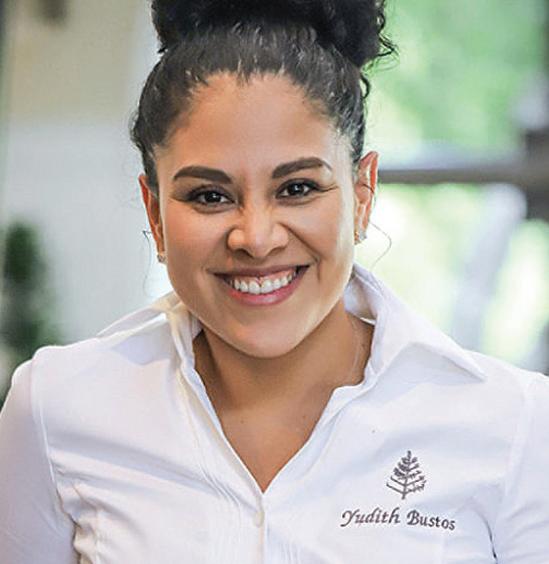
YUDITH BUSTOS
FAVORITE SPICE AT THE MOMENT: Cinnamon
COMFORT FOOD: Mangos with salt, lemon, Tajin
IF YOU COULD ONLY COOK WITH ONE VEGETABLE, WHAT WOULD IT BE? Potatoes
YOUR FAVORITE FOOD CITY: Paris
THE DISH YOU’RE MOST PROUD OF CREATING: The Chocolate Ring, a super light flourless chocolate cake
taurants in Paris and London, experiences that shaped her elegant presentation and global perspective.
“Every place I visit has helped me to grow professionally and also personally. It’s important to see different cultures and travel, because you can see the trends. We are not doing what we were doing 20 years ago” she says. “Now, I can take more risks, I can combine savory and sweet and I can make a foie gras truffle with coffee. I can make cheesecake with brie. I can do things because customers are more open, and I get to try different trends.”
Though, it wasn’t an easy breezy journey; accepting her first job in the U.S. was truly a leap of faith. “It was hard because I’m not from this country— there was the language barrier, the culture barrier,” Bustos Taleno admits. But challenges became opportunities.
During her eight years in D.C., she transformed uncertainty into expertise, and deepened her commitment to
KNOWN FOR HER REFINED TECHNIQUE AND ARTISTIC PRESENTATIONS, PASTRY CHEF YUDITH BUSTOS TALENO CRAFTS DESSERTS THAT ARE AS BEAUTIFUL AS THEY ARE FLAVORFUL.
excellence, collaboration, and mentorship—values that continue to define her approach today. And, fortunately, she had chefs around her who became great mentors. “Having a mentor is extremely important and in culinary work in general, it’s kind of crucial for your growth in the industry,” she adds. “They can help you grow, guide you, provide crucial feedback.”
Now, she’s paying it forward, and is a dedicated mentor committed to fostering a kitchen culture rooted in learning and creativity. Just as she was supported early in her career, she empowers young pastry chefs to grow with confidence, humility, and curiosity. “I mentor young chefs across different Four Seasons locations. We meet every month or two. I check in, see how they’re doing. It’s about helping others grow, just as someone helped me,” she says.
At Adorn, Bustos Taleno’s creativity shines through innovative desserts that tell a story. Her Strawberry Pavlova
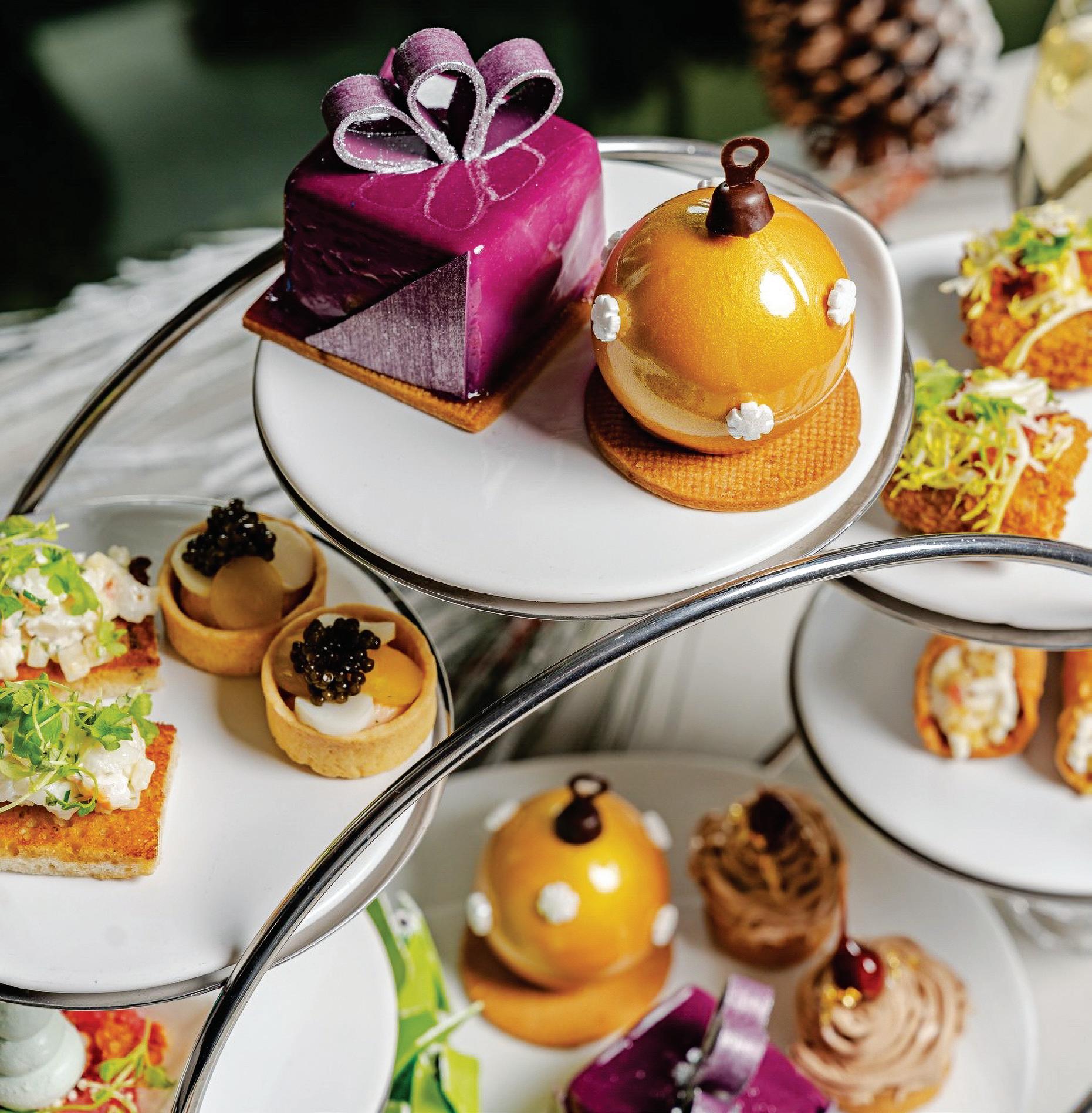

Polly-o mozzarella is the best part of the pizza



Developed specifically for New York style pizza, our new loaf is the perfect combination of quality and convenience. With a superior melt, stretch and browning, this formula is full of flavor with less residual oil.
CHEESE, Made in New York since 1899
email info@polly-o.com to request samples
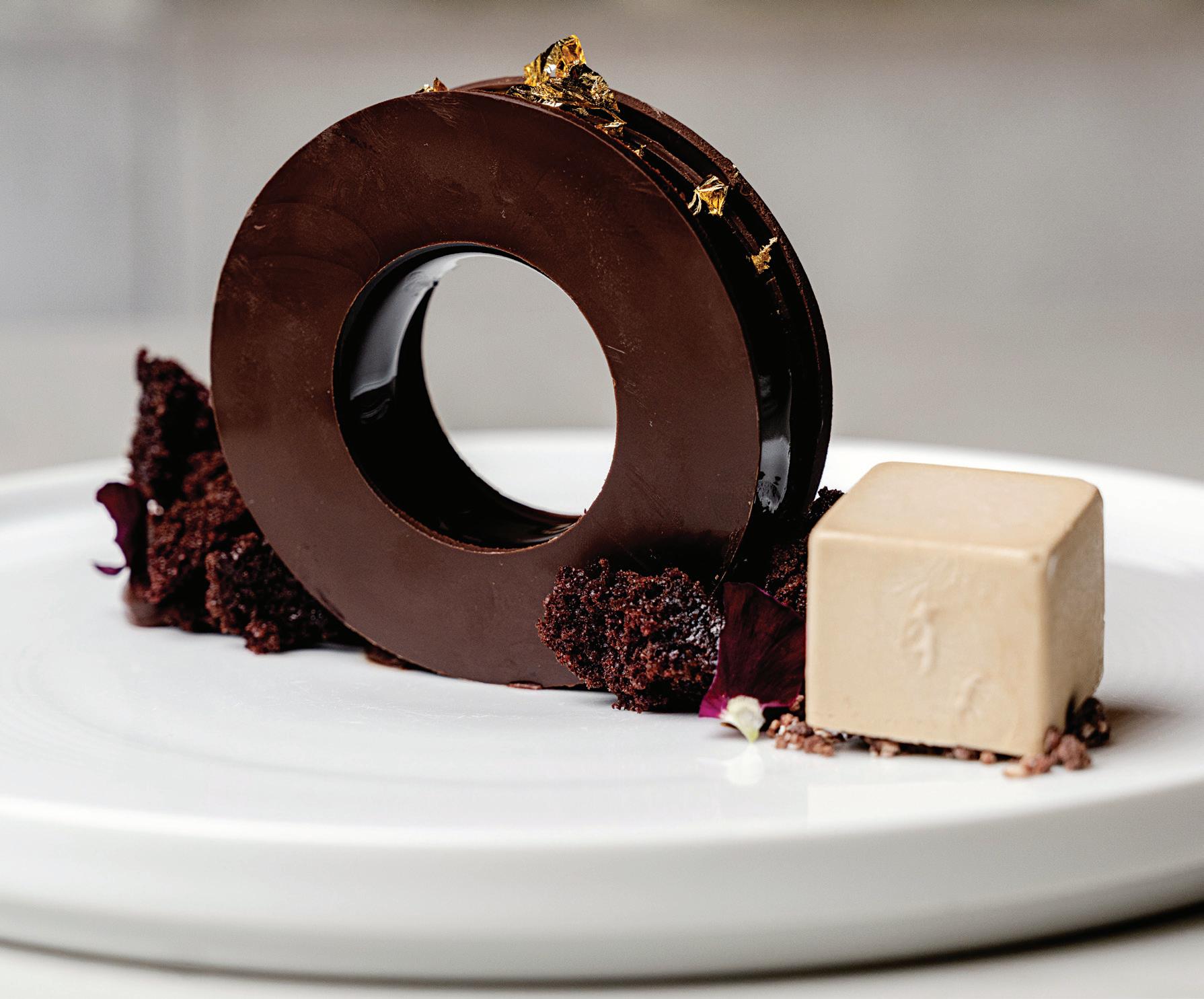

with vegan meringue, strawberry-citrus compote, and strawberry-elderflower sorbet emerged from a simple market walk, for example. “I saw beautiful strawberries and immediately got inspired. I thought about making it vegan, glutenfree, dairy-free—pushing boundaries.”
One of her newest desserts, Chocolate & Marshmallow, is modeled after the infamous Navy Pier Centennial Ferris Wheel, a whimsical tribute to the city’s iconic lakefront. Each layer of the wheelshaped creation is a nod to movement, joy, and imagination, including dark chocolate mousse, toasted marshmallow ice cream, and candied cocoa nibs. At its base, rich chocolate brownie crumbles pay homage to the city that first gave the world the brownie. (The brownie was created in the Palmer House Hotel in Chicago in 1893.)
Current dessert menu highlights at Adorn also include a Brie Cheese -
cake with hazelnut, peach compote, honeycomb tuille, and citrus shortbread; Lychee & Matcha, with raspberry mousse, rose gelée, matcha streusel, and lychee sorbet; and a reimagined Carrot Cake with caramelized pineapple, candied pecans, yogurt sherbet, and carrot ribbon. Whenever she can, Bustos Taleno infuses tropical flavors from her upbringing in Costa Rica, like using pineapple and lychee.
Her approach to sourcing and choosing ingredients is also extremely intentional. “I don’t like using fake flavors or excessive sugar; I use pure, clean ingredients,” she says. “When you taste the food, you have that natural flavor, and you feel better after you eat it, too. And you also wouldn’t want to eat only one bite. You want to eat the whole thing.”
“When I go back home, I experiment with papaya, passion fruit. I use the natural sugar from the real fruit, and I’ll do a papaya sorbet. It’s more natural, more homemade,” she says. “It’s a learning process, and it takes time, experience, and consistency. Consistency is very important in the kitchen—maintianing a consistent food quality while we serve, and consistency with how we present it.”
Beyond the kitchen, and even beyond
service in general, she notes the importance of creating a different kind of positive fine-dining experience; her high standards apply to every detail. Perfection is the expectation. “It’s tough sometimes as a chef, you’re doing your best, but you’re going to criticize everything,” she admits. More than technical skill, Bustos Taleno believes in personal growth. “Passion is everything. It’s your day-to-day. But you also need patience. Be patient with yourself. Everything has its own time.”
Ultimately, Bustos Taleno is proud of the person she has grown to be, and grateful for the people she’s met along the way. She also feels proud because “I can inspire other women, other people in my country, and in other countries. A clear example, when I had my last experience back in Dubai, as a woman, you inspire others. I’ll say, ‘I’m a chef,’ and women will ask, ‘How did you become a chef? Can you please explain?’ It’s a big deal. Sometimes you don’t see it yourself, how others see you as a leader. This is powerful.”
“You need to make sure you help others and inspire other people,” she continues. “You know your values as a person, as a chef, as a professional. I know a lot of women in our industry, and you need to be tough to be a woman and to be a chef. It’s not impossible. If you have passion, if you have love, this is all you need. This is my belief.”
While Chicago feels like home for now, Bustos Taleno knows her journey is ongoing. “I have projects to finish here. I want to improve, to create, to grow. But in this industry, you never stop learning.” And as for what’s next? Bustos Taleno says it’s about staying present and evolving with the seasons—both in the kitchen and in life.
From a small Costa Rican farm to the kitchens of Four Seasons around the world, Bustos Taleno has transformed her passion into an art form—one dessert at a time. “You never forget your roots … No matter where I am in the world—Dubai, Hong Kong, in all these countries—you always feel the part of your home in your heart.”
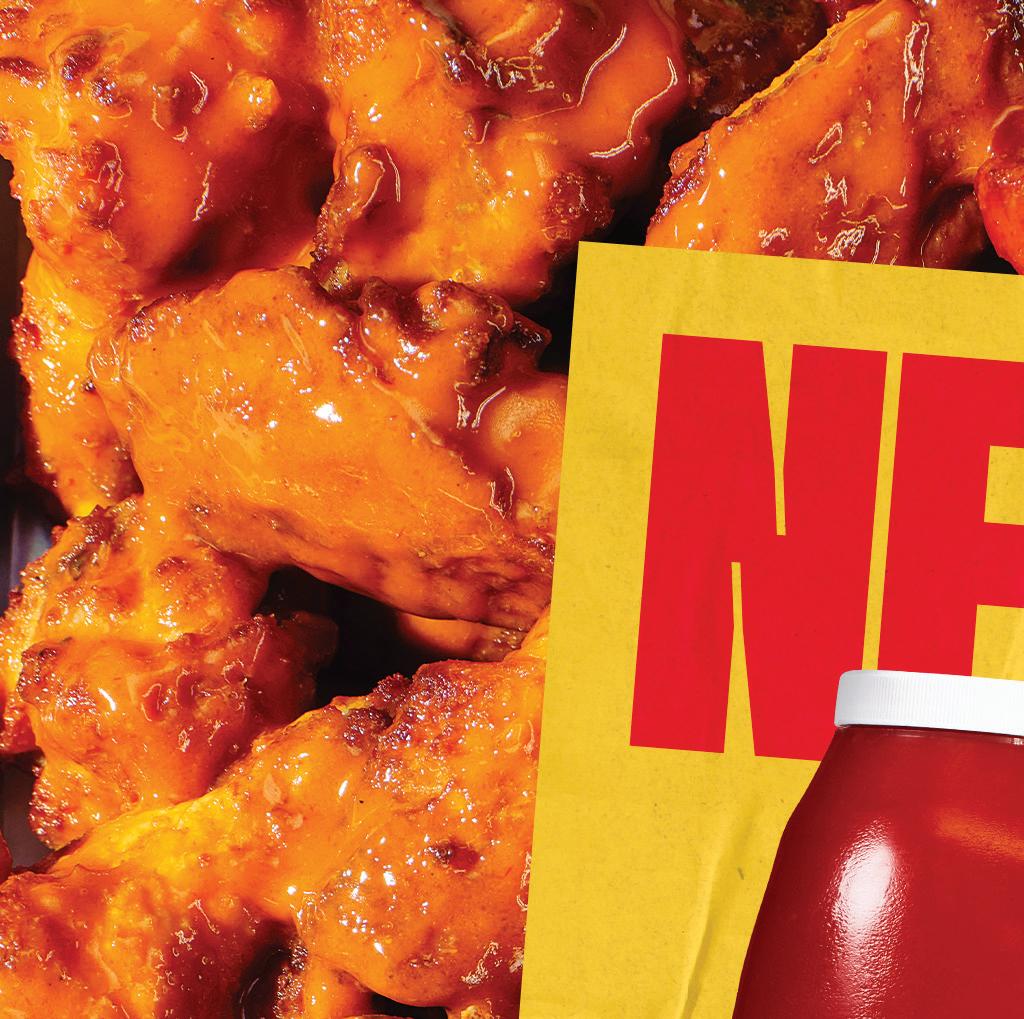

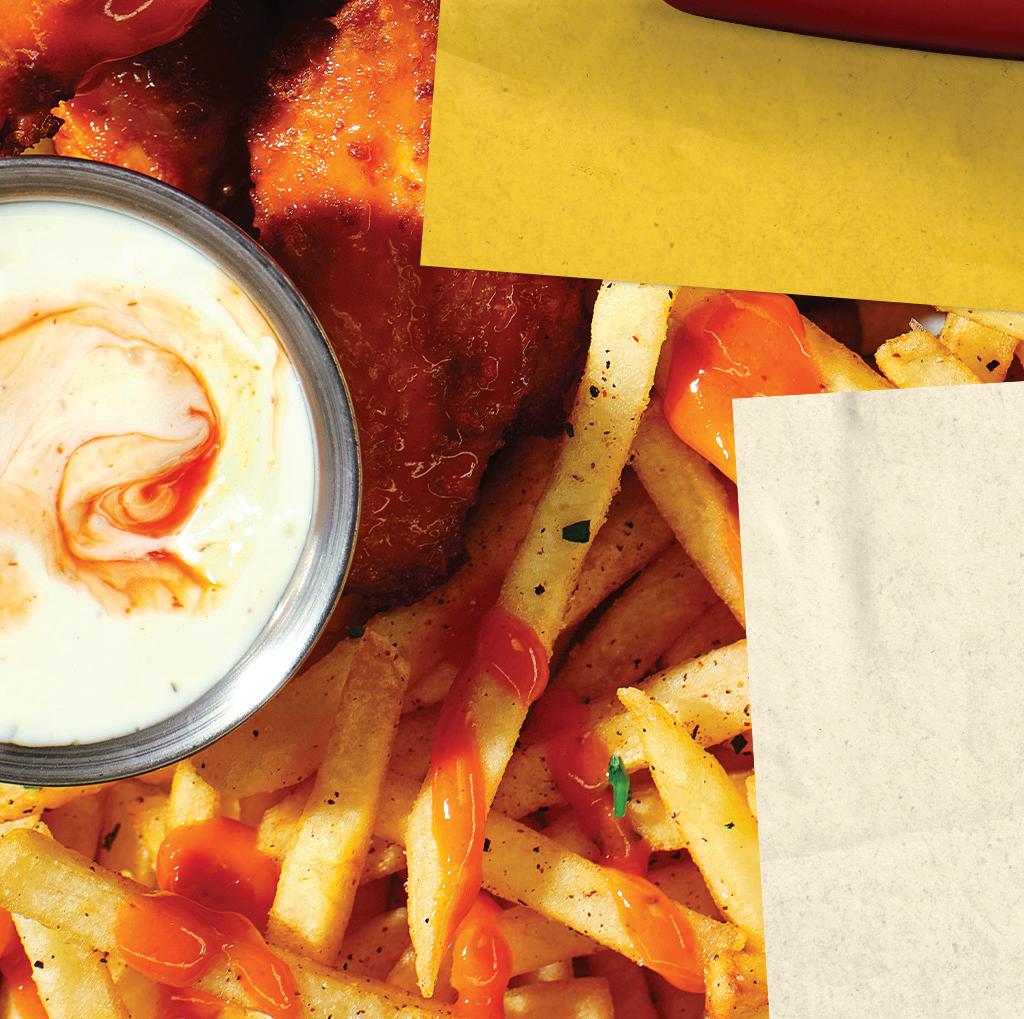




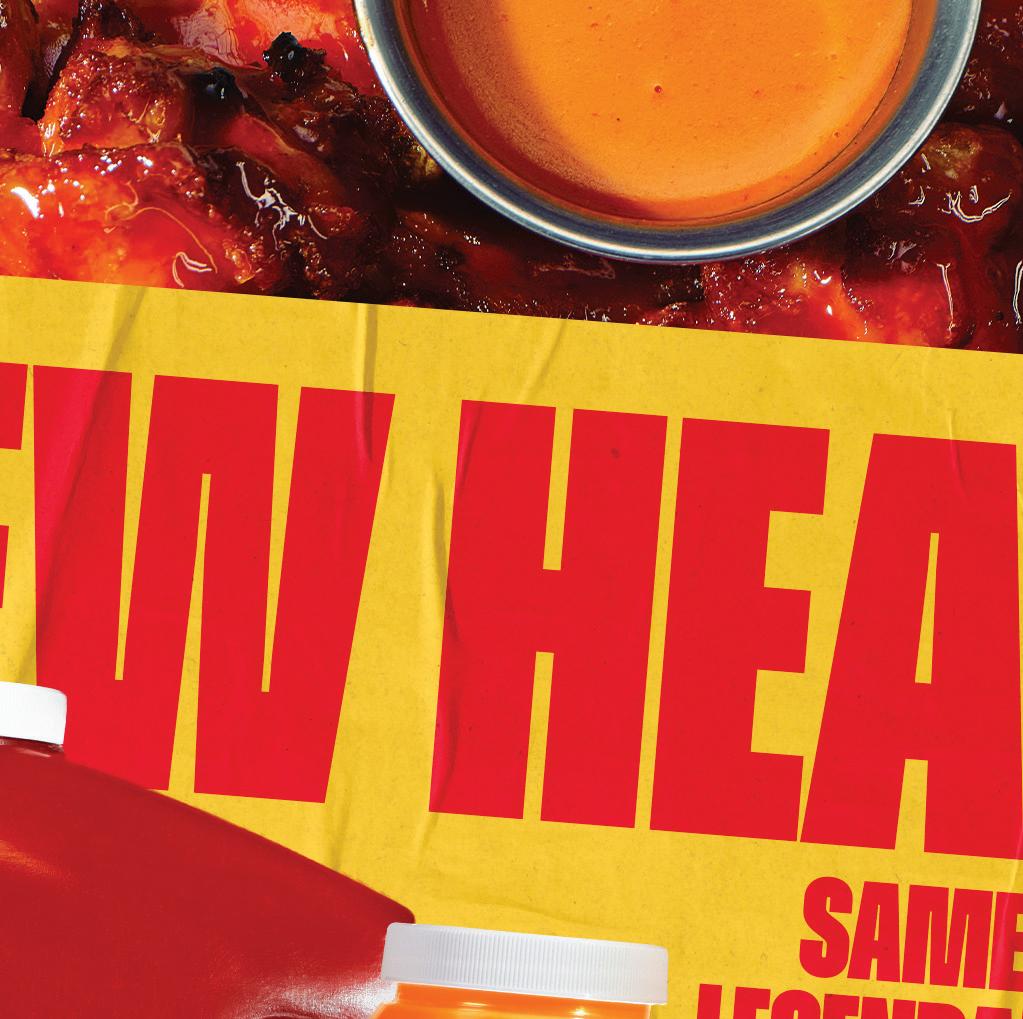
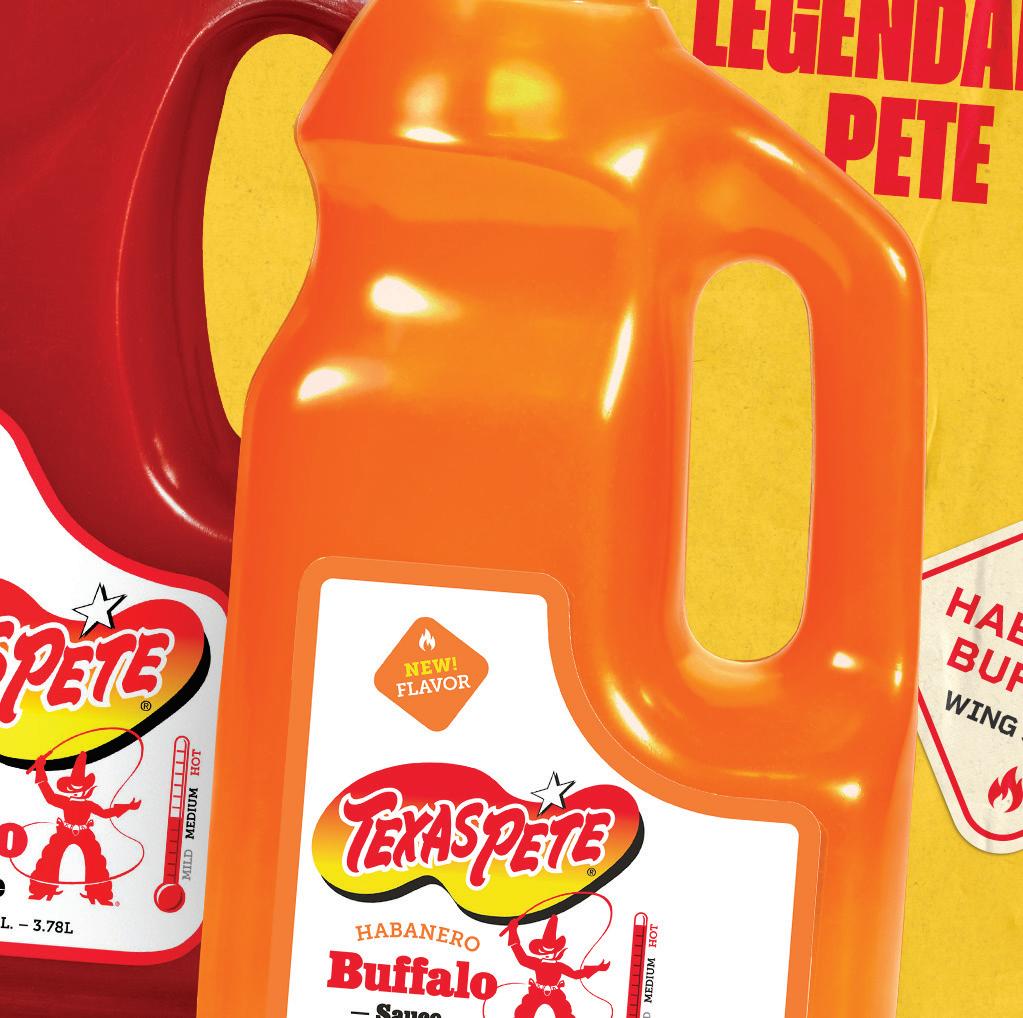


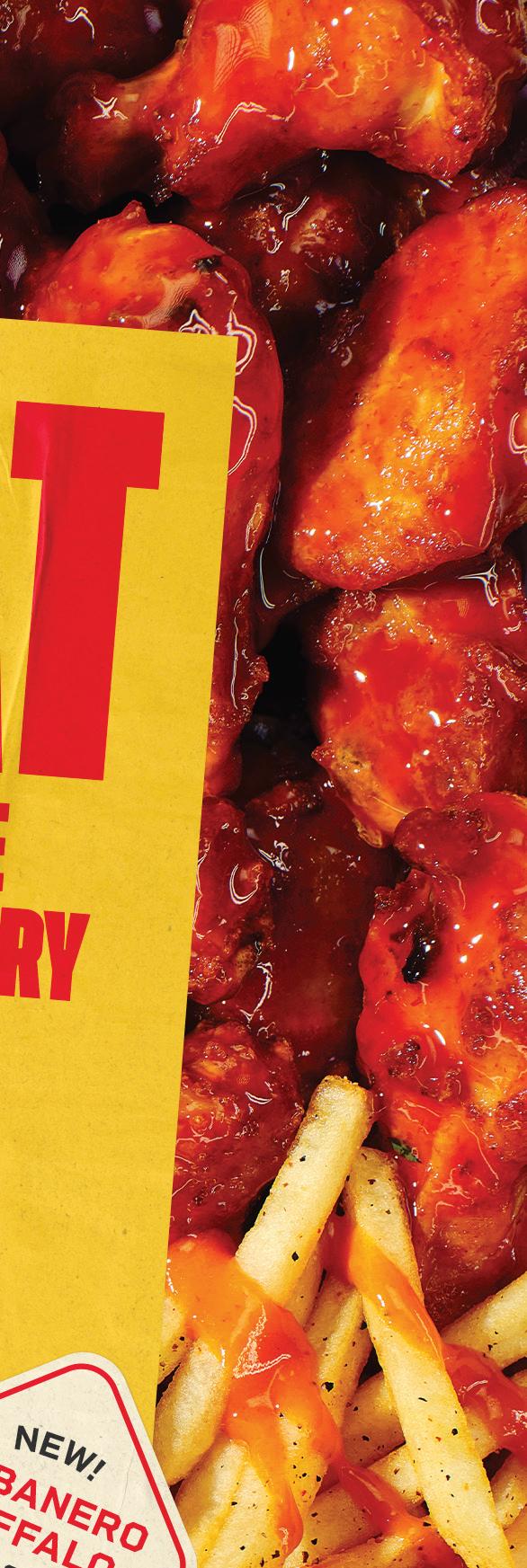
New Texas Pete® Habanero Bu alo Wing Sauce brings bold heat, deep avor, and the perfect cling for next-level Wings. Plus, we’ve reformulated our Hot Bu alo Sauce into the clingier Original Bu alo Wing Sauce, a thicker recipe for better results. Heat up your wing game with the sauce that heats up the wing game. Ask your distributor for the full line of Texas Pete® Bu alo Wing Sauces.
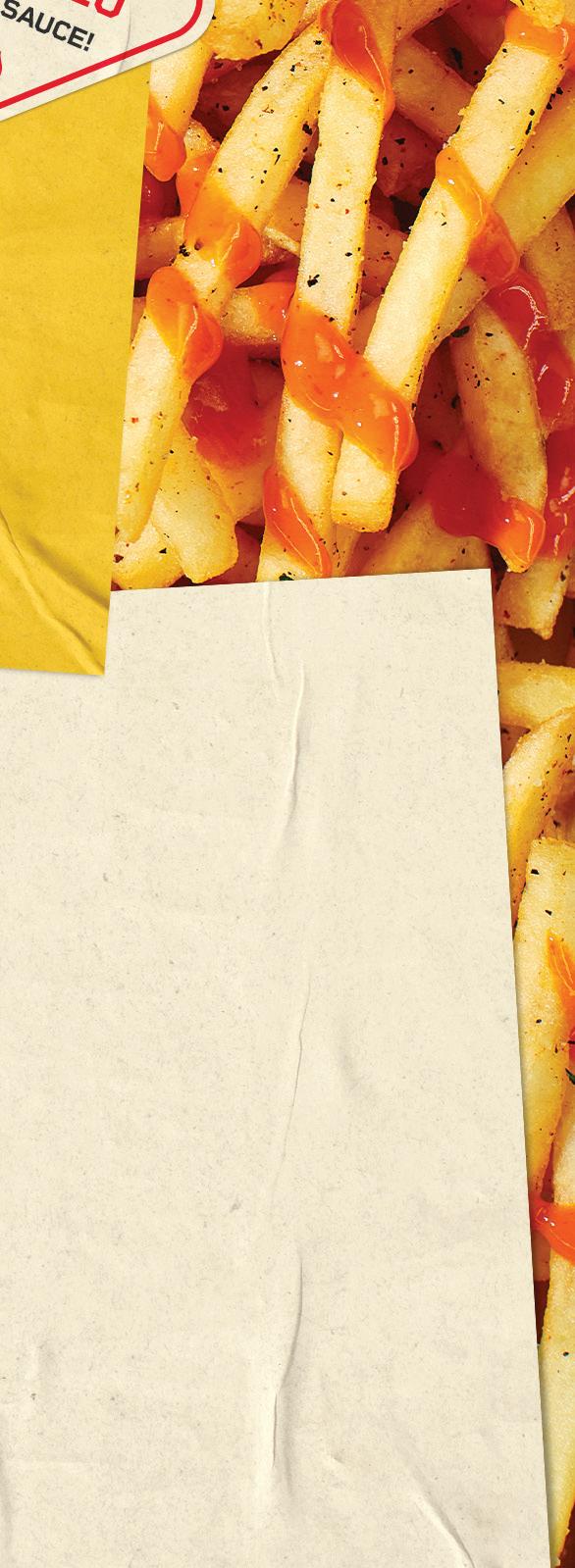
BY SATYNE DONER
From the wild frontier of Alaska to the quiet lakes of Michigan and the earthy woodlands of Washington, these chefs are reshaping restaurant menus with local foraging at the forefront.

AMID THE LUSH FORESTS and mountains of Alaska’s rugged frontier lies Tutka Bay Lodge, a wilderness retreat boasting a culinary program with menus forged from local abundance. Tucked between a rainforest and the Pacific Ocean, the landscape defines every dish that’s served.
Mandy Dixon, chef and part of the mother-daughter duo that owns and manages the lodge, grew up picking blueberries along Alaska’s rivers. Her mother used to tell her they “ate like bears,” and
she found an early joy in foraging for berries and catching wild salmon. “My childhood deepened an intentional practice of stewardship, taking only what we need from the land,” Dixon says. “It instilled in me curiosity and joy of sharing with others respectfully. For Alaskans, foraging is a way of life. It’s a food culture.”
From seaweed, herbs, and shoots in the spring to berries and wildflowers in the summer to mushrooms and cranberries in the fall, timing is everything when it comes to foraging. If Dixon pulls
CHEF JOSEPH VANWAGNER USES FORAGED INGREDIENTS TO CREATE DISHES LIKE THE WOODROASTED COD, WHICH IS DRESSED WITH SPRING PEA AND MUSTARDS, CAPER RELISH, LEMON EMULSION, PIMENTON, AND SMOKED TROUT ROE.

a Devil’s Club shoot too late in the season, it becomes bitter. Menus are carefully concocted based on this intimate knowledge of the land; these spiky shoots are pulled, fermented, and battered during a specific week in the spring. Because the lodge is nestled inside a spruce forest, chefs harvest spruce tips in the spring while they’re bright green and use them to make sugars, salts, and dishes like cured halibut—a fresh and citrusy blend of flavors inspired by Alaska’s foodways.
Partnerships with local fishermen and farmers aren’t just an amenity— they’re essential for survival, especially in Alaska’s extreme climate. Storms and fluctuating weather can wipe out parts of the food chain. While the lodge’s menu changes daily, the kitchen pantry is always stocked and ready to pivot.
“Being so far removed from the Lower 48, if our food chain gets disrupted, we are at a real risk of running out of food,”
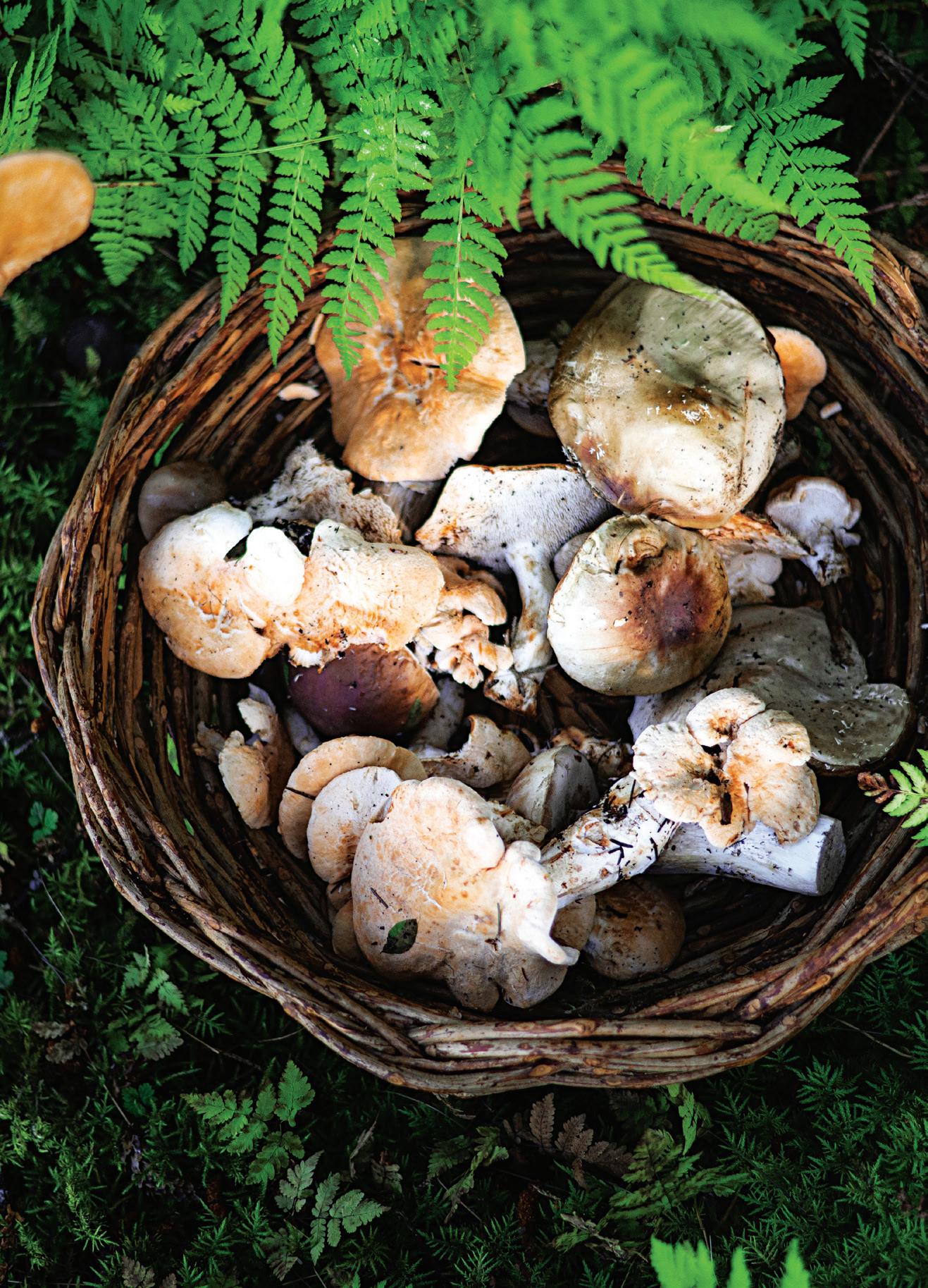
Dixon says. “Our partnerships are a top priority. Those relationships are key to having clean and wild food readily available to complement our foraging.”
The lodge is always exploring new techniques to tell the cultural story of Alaska through food. Dixon, with permission from Indigenous groups, visited a native village to learn how they cure and preserve fish with seaweed and salt from the beaches. Foraging is an ongoing cycle—an ode to the land.
“I learned how to make soups and
ferment and cure fish in ways I never thought about. We’re constantly staying curious with our foraging and finding new methods of preparing these ingredients,” Dixon says. “We’re also keeping old traditions alive … these recipes were thousands of years old, but still part of today’s culinary fabric.”
In the second-most agriculturally diverse state in the nation, chef Joseph VanWagner is presenting his love letter to Michigan with Echelon Kitchen & Bar. The hyper-seasonal menu changes nearly daily based on ingredient availability, most of which are sourced within a 50-mile radius from local farmers, purveyors, artisans, and brewers. “Foraged items are highly prized and unique for us to present what is growing in Michigan right now,” VanWagner says. “They have very limited availability, but their personalities are exciting for us to give guests a taste of wild Michigan.”
Most notable among the foraged items is the pawpaw fruit, a native Michigan delicacy known for its blend of banana, mango, and pineapple flavors. Typically in season from late August to late November, these are among the chef’s most favored ingredients.
VanWagner has been leaning into wood-fired cooking, which he describes as an ethos as much as a technique. He uses it alongside foraged ingredients to create dishes like the Wood-Fired Pita and Dips, Charred Cauliflower, and Wood-Roasted Cod, which is dressed with spring pea and mustards, caper relish, lemon emulsion, pimenton, and smoked trout roe.
“Wood fire is the most primal form of cooking, so when you take these wild ingredients and introduce them with smoke and char, you’re bringing out their inherent qualities to an extreme level,” VanWagner says. “It’s a special way to present the best in an ingredient in its purest form.” To extend Michigan’s growing season as long as possible, VanWagner makes ample use of preserving and fermenting ingredients, allowing them to last through multiple seasons. Like Tutka Bay Lodge, preservation and collaboration with local producers are
crucial for stocking the pantry during Michigan’s harsh winters. “Relying on the experts—people who were raised to forage and grow and preserve—is an immense resource. We are extremely plugged in because they continue to educate us as we build our menus,” VanWagner says. “Michigan’s seasons are continuously evolving, and so are we.”
In the Pacific Northwest, Sabine Café opened in the Seattle area with the mission to create a community gathering space featuring a menu powered by local farms, foragers, and producers. While the offerings celebrate the bounty of the region, executive chef Jacob Dunkelberger adds a global twist to local ingredients. “I work with foragers throughout the region to see what’s in season and where I can have the most flexibility for creativity,” Dunkelberger says. “If we have an abundance of wild mushrooms gathered locally, I’ll introduce Middle Eastern ingredient profiles like manchego to create a unique blend.”
A single foraged ingredient can serve both the daytime café menu and the dinner service. The Morel Mushroom Hummus features foraged mushrooms infused with vinegar, paired with cured egg yolk, za’atar, Turkish olive oil, and house-made pita. Alternatively, the Mushroom Toast also highlights these mushrooms, paired with Aleppo pepper, za’atar butter, caramelized onion aioli, manchego, and rye bread. The mushrooms even find their way into halibut dishes, featuring fish caught off the coast of Puget Sound. Nothing goes to waste.
Even as a second Sabine Café location is slated to open in Washington in early 2026, the commitment to sustainable, locally sourced, and foraged ingredients remains strong. As the team seeks to further elevate its dinnertime menu, the rustic elegance of the Pacific Northwest will continue to weave through every dish.
“We try to use the food in our backyard. Sustainability is who we are—it’s not a choice. We’re using what the Pacific Northwest has to offer, no matter the season, no matter the land or sea,” Dunkelberger says. “It’s a constantly changing balance.”
As consumer preferences evolve, the demand for sugar-free options—particularly in the non-alcoholic beverage space—is gaining notable traction. According to Datassential, at least 20 percent of the U.S. now actively seeks sugarfree offerings, with health-conscious individuals gravitating toward vibrant, fruit-forward flavors.
This growing interest has translated into measurable momentum: sugar-free items currently appear on 5.5 percent of menus and have experienced a 7 percent increase in menu penetration over the past four years. With an additional 3 percent growth projected through 2028, this trend presents a lucrative opportunity for foodservice operators. Incorporating sugarfree beverages into menus aligns with wellness-driven dining habits and enhances customer satisfaction, encourages repeat visits, and drives incremental profitability.
Lean in to a growing consumer interest that drives traffic and profitability.

Monin, a leading flavor solutions provider, offers an extensive line of sugar-free syrups designed to help operators meet the rising demand for healthier beverage options without compromising on taste. “At Monin, our goal is to deliver products that taste great without the diet-style aftertaste sugar-free products traditionally have,” says Kevin Robb, senior product manager at Monin. “We also stay on top of flavor and ingredient trends to keep our offerings fresh and relevant. For example, we recently launched sugar-free lavender and sugar-free blue raspberry because florals and nostalgic flavors are trending.”
Designed with both the end customer and the operator in mind, Monin’s sugar-free syrups deliver authentic flavor. For consumers, these syrups offer the rich, full-bodied taste of traditional sweeteners—minus the sugar—making it easier to enjoy delicious, low-calorie beverages that align with health and dietary goals.
On the operational side, Monin ensures its syrups are shelf-stable, easy to incorporate, and
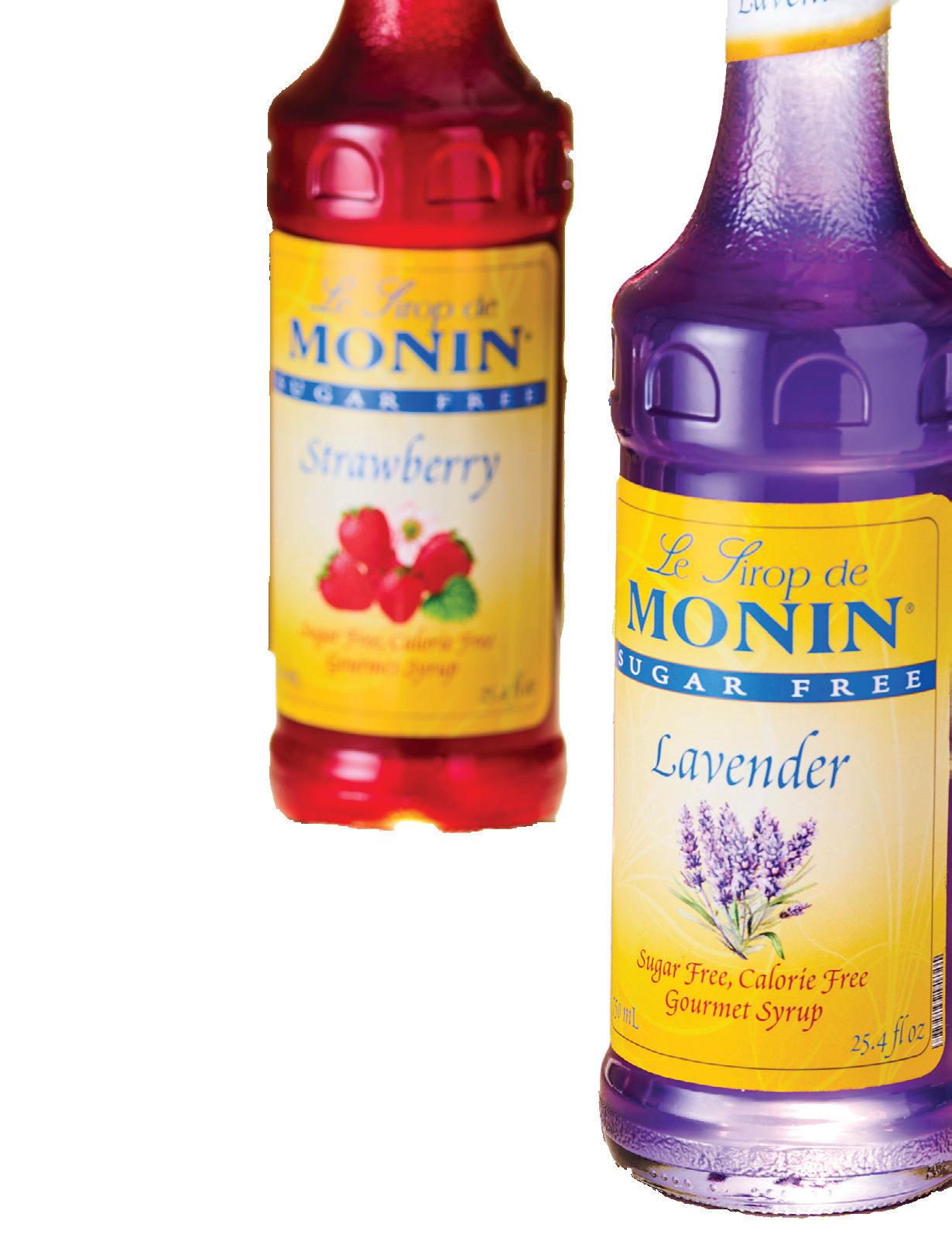
available in a wide variety of flavors, giving foodservice professionals the flexibility to craft customized drinks with speed and consistency. “The syrups are simple to use—just pump and go— and extremely versatile,” Robb says. “One syrup can be used in multiple drinks or applications, so operators can expand their menu without needing a huge inventory of ingredients.”
Operators can offer signature drinks and LTOs by adding a few pumps of sugar-free syrup to bases like tea or lemonade. “We work closely with many operators to create signature LTO beverages, and they often see a positive impact on traffic and sales,” Robb says. “New and unique menu items can drive repeat visits and increase average ticket sizes, especially when the flavor is craveable and only available at a specific chain.”
Monin helps operators drive sales and elevate the guest experience—beyond supplying high-quality syrups—by offering marketing support. Branded POS materials are readily available, making it easy to promote new or featured drinks. Additionally, Monin frequently works hand-in-hand with operators to develop signature drinks and custom signage. This personalized approach ensures cohesive branding and maximizes the impact of sugar-free specialty drinks on menus.
“Monin’s syrups let everyone enjoy delicious, flavor-forward drinks without the sugar and added calories,” Robb says. “Whether it’s Gen Z looking for better-for-you choices or someone managing a dietary condition, we’re providing everyone with options they can feel good about.”
BY ABBY WINTERBURN
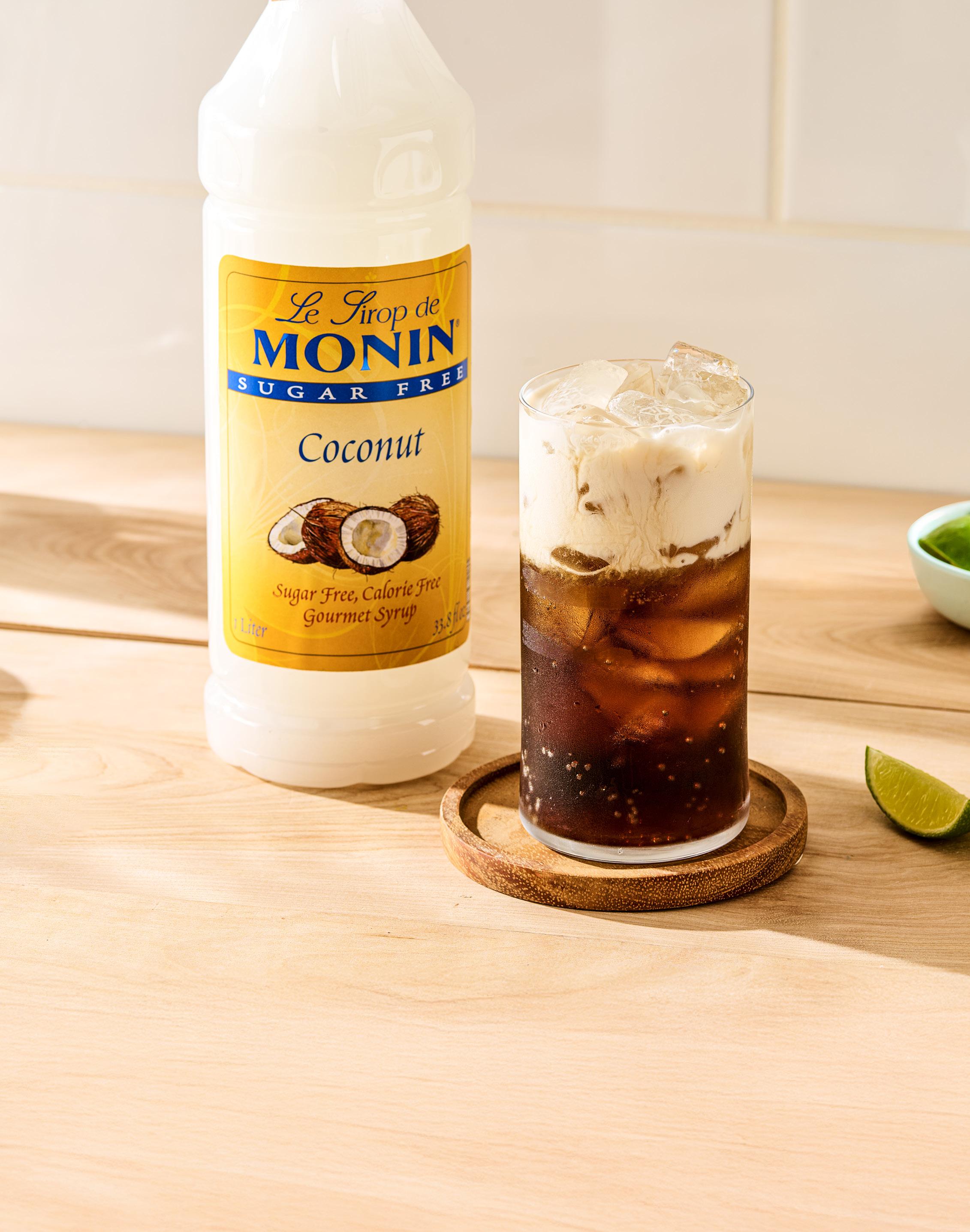

How to make a Sugar Free Coconut
Glass Size: 16 oz. tall/pint
½ oz. Monin Sugar Free Coconut Syrup
5 oz. diet cola
Top with:
2 oz. non-dairy creamer
Fill serving glass with ice. Pour ingredients into serving glass in order listed. Stir gently to mix.
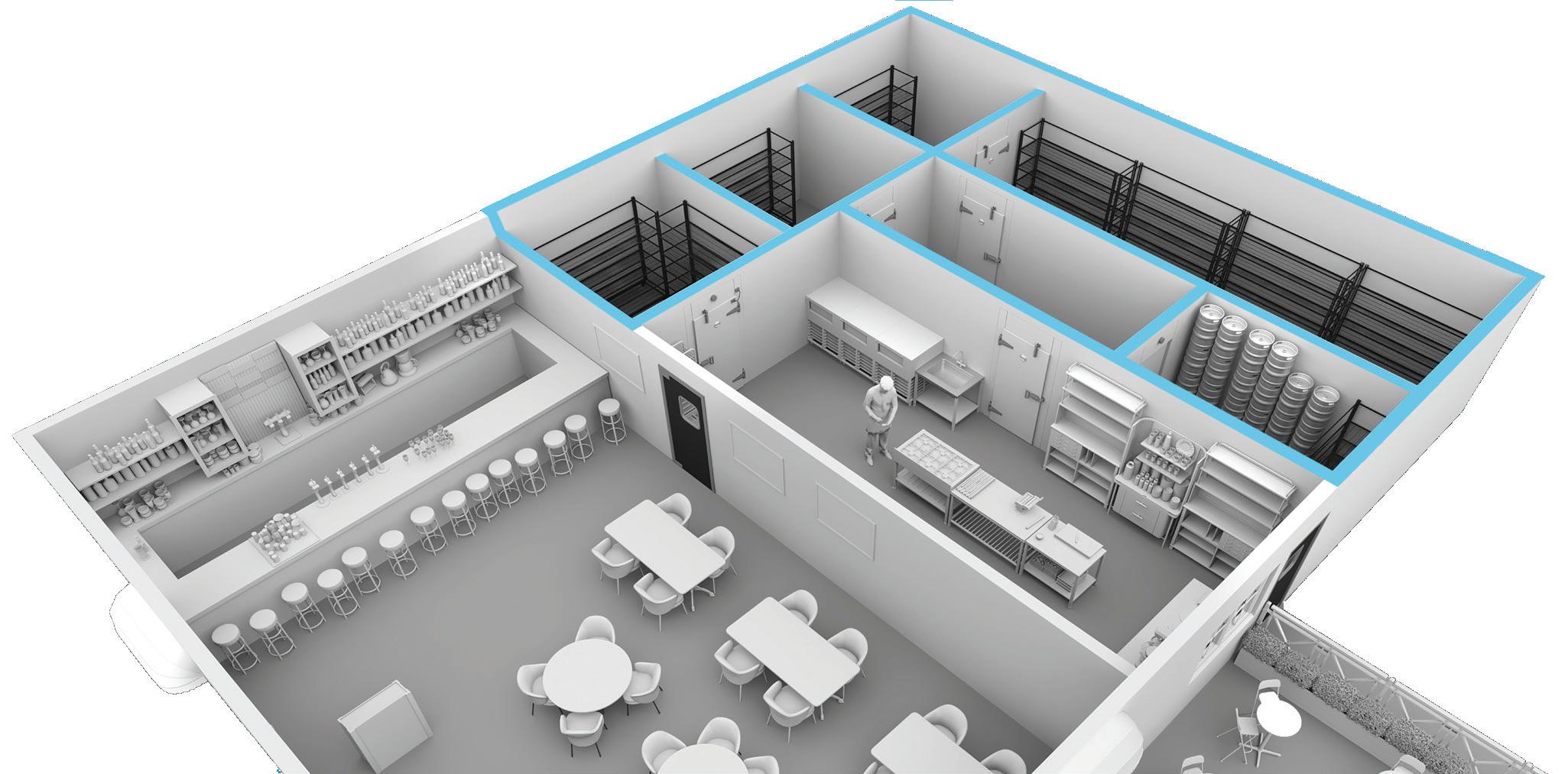


MENTIONED IN THIS STORY ZERO LOUNGE • RED LOBSTER • BAR LOUIE • CHILI’S

THE ERA OF BOY BANDS AND DIAL-UP INTERNET IS BACK IN STYLE, AND BARS AND RESTAURANTS ARE FINDING WAYS TO CAPITALIZE.
BY SAM DANLEY
Bars and restaurants are turning cocktails into pop culture time machines.
KEVIN DE NICOLO WAS SPINNING throwback hits at an ‘80s-themed arcade bar in North Hollywood when the idea struck: What would a nostalgic bar look like for his own generation? That question became the foun -
dation for Zero Lounge, a cocktail concept built around early-2000s culture and aesthetics.
Billed as Hollywood’s first Y2Kthemed bar, Zero Lounge is designed as a time capsule—a place where the
mood, music, and menu reflect the turn of the millennium.
“The ‘80s didn’t really mean much to us, because we were babies,” says Katie DiMento, a veteran mixologist and Zero Lounge’s operations manager. “But the ‘90s and early 2000s? That’s where the nostalgia really hits.”
De Nicolo and DiMento aren’t the only ones rewinding the clock. The era of boy bands and dial-up internet is back in style, and bars and restaurants are finding ways to capitalize.
Red Lobster recently leaned into the trend by partnering with NSYNC’s Joey Fatone for a campaign set in 1999, celebrating the chain’s 3-Course Shrimp Sensation with a heavy dose of retro flair.
Bar Louie kicked off 2025 by celebrating its 35th anniversary with a lineup of ‘90s cocktails, including Long Island Iced Teas, Sex on the Beach, Blue Hawaiians, and Alabama Slammers—drinks that haven’t been regular menu staples in years.
Chili’s joined in with the Radical ‘Rita, a color-changing tequila cocktail made with blue curaçao, dragonfruit syrup, and ‘90s-style swizzle sticks. To help introduce it, the brand brought in Tiffani Thiessen— best known for her role on “Saved by the Bell”—as the face of the campaign.
Zero Lounge takes the nostalgia playbook a step further. The team describes it as a conscious escape from the constant barrage of digital feeds and endless scrolling. The bar offers a break from modern distractions, inviting guests to step away from their screens and rediscover the value of in-person, shared experiences.
DiMento explains that the space is a retro bar created by millennials for millennials. It honors the art, entertainment, and culture that defined a generation—from movies and music to video games, anime, and the early days of the internet—embracing both mainstream and lesser-known influences.
The interior design draws inspiration from the idea of being inside a computer. Think hacker visuals and a Matrix-style aesthetic, with moody lighting and digital motifs woven throughout the space. The DJ booth is designed to look like a


BILLED AS HOLLYWOOD’S FIRST Y2K-THEMED BAR, ZERO LOUNGE IS A COCKTAIL CONCEPT BUILT AROUND EARLY-2000S CULTURE AND AESTHETICS—A PLACE WHERE THE MOOD, MUSIC, AND MENU REFLECT THE TURN OF THE MILLENNIUM.
‘90s bedroom, complete with Furbies, an old-school TV, plenty of VHS tapes, “Goosebumps” books, boy band posters, and other trinkets.
Behind the bar, DiMento crafted a cocktail menu that blends playful nostalgia with elevated flavor profiles. “When you go to a nighttime spot, sometimes the drinks and cocktails are an afterthought,” she says. “We wanted to make sure that we had restaurant-grade cocktails within a lounge bar space.”
The first drink she created for Zero Lounge was a peanut butter whiskey cocktail with muddled strawberry, blackberry, lemon, and agave. “My first initial

thought was to call it the After School PB&J—and that’s the name we stuck with—because it tasted just like a peanut butter and jelly sandwich,” DiMento says. “I was thinking about what types of nostalgic flavors I could come up with that would transport someone back to Y2K. For me, that was an after school snack.” From there, the menu grew into a lineup of drinks packed with references and playful touches. One of the best-selling cocktails is the Basil Patch
Kid, made with tequila, ginger liqueur, lime, agave, basil, and strawberry. It’s topped with a Sour Patch Kid on a basil leaf, a whimsical garnish that’s become a crowd favorite.
Another is the Fresh Prince Fizz, named after the ‘90s TV mainstay, made with vodka, blackberries, lime, agave, and soda water. DiMento calls it “super simple,” but says using fresh ingredients gives it an elevated feel—part of her larger goal to make sure every drink
stands on its own.
Then there’s The Mean Girl, one of DiMento’s personal favorites. The cocktail nods to the iconic early 2000s teen movie and is made with tequila, apricot liqueur, lemon, egg whites, and strawberry. It’s rimmed with pomegranate sugar, which she says reminds her of the


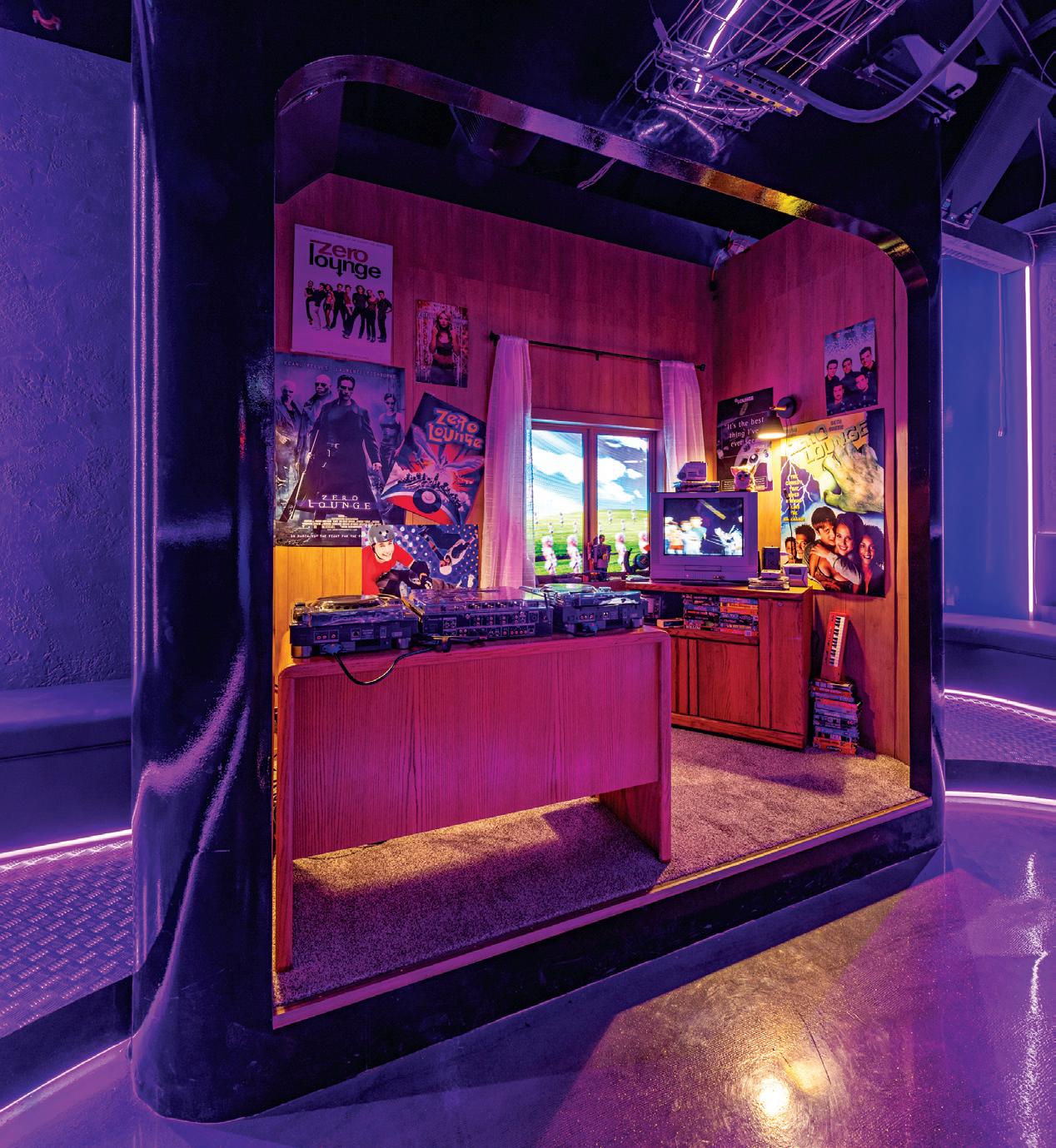
dippable, powdery candies she ate as a kid. Zero Lounge also uses a Ripple Maker— a machine typically used for latte art—to print images of Lindsay Lohan’s mugshot in the foam on the surface of the drinks.
“That’s really been a hit,” DiMento says. “I love a funny garnish or a sexy garnish or anything like that. If a drink is eyecatching, you’re like, ‘What is that? I want whatever that is.’ So, all of our drinks have a little extra something like that.”
The After School PB&J comes with
a bite-sized version of the sandwich on a skewer. Candy plays a key role across the menu, from the Saved by the Bellini mocktail—made with non-alcoholic gin, peach purée, agave, and soda water, and topped with a peach ring—to the pride-themed Y2-Gay cocktail, a jalapeño tequila-based drink finished with a rainbow sour belt.
Making drinks this intricate posed early challenges. Some cocktails initially took up to seven steps to prepare, which slowed service. DiMento developed a system that streamlined the process without compromising flavor. For example, the PB&J drink now uses pre-bottled juice blends—one strawberry-lemon and one blackberry-lemon—that replicates the original taste and cuts prep time nearly in half. She also fine-tuned ratios to maintain consistency and crossutilized ingredients across multiple cocktails to keep inventory tight. Garnishes like the Sour Patch Kid and basil leaf are also pre-skewered for quick assembly.
Bright colors and over-the-top garnishes mirror the aesthetics of the Y2K era, where electric pinks, neon blues, and shimmery metallics were everywhere. That color story is carried through the bar’s lighting. A custom LED screen spans the ceiling, looping a rotating series of visuals that blend childhood references—Happy Meals, Razor scooters, Furbies, Bop-Its—with Zero Lounge branding. The graphics shift and move, creating an immersive experience that’s drawn attention from DJs and performers looking to tap into the bar’s one-of-akind visuals. The ceiling screen also pulls double duty, projecting images of drinks to tie the bar’s look and menu even more closely together.
Ultimately, DiMento says Zero Lounge isn’t just about reliving the past. It’s about recreating the mindset that came with it.
“Sure, you should take pictures while you’re here, but it’s not the type of place where everyone ends up sitting on their phones,” she says. “In a weird way, creating these drinks and this space that’s so nostalgic gets people back to a mentality where they’re like, ‘Who cares where my phone is? I’m having a great time.’”

TUESDAY, SEPTEMBER 2, 2025
10:00AM - 7:00PM Registration
AGENDA AT A GLANCE
9:00AM - 9:45AM Future-Proofing QSR: How Brands Are Engaging Next-Gen Customers and Team Members Neha
12:00PM - 4:15PM Girly Grit: Real Women, Real Conversations (LEAD Luncheon)
Kimberly Dockter Bollinger DIRECTOR OF OPERATIONS | MELLOW MUSHROOM Olivia Fazzola DIRECTOR OF OPERATIONS | NANDO Amy Hom COO | BARCELONA WINE BAR Sheri Miksa 5X CEO/PRES. | (BIBIBOP, BONEHEADS, MAZZIO’S, ROBEKS, RUBIO’S) GLEAM NETWORK
Emily Williams Knight Ed.D PRESIDENT & CEO | TEXAS RESTAURANT ASSOCIATION
Julie Zucker PARTNER AND CHIEF MARKETING OFFICER | BRANDED HOSPITALITY
2:00PM - 4:00PM Franchisee Workshop - Ways of the Wealthy Franchisee: Unlocking the Human Edge Behind Operational Excellence
Nadeem Bajwa COFOUNDER AND CEO | BAJCO GROUP (PAPA JOHNS FRANCHISEE)
Scott Greenberg AUTHOR AND KEYNOTE SPEAKER
5:30PM - 6:30PM Welcome to Atlanta, with Chick-fil-A CEO Andrew Cathy
Andrew Cathy CEO | CHICK-FIL-A
6:30PM - 7:30PM Welcome Reception
WEDNESDAY, SEPTEMBER 3, 2025
7:30AM - 6:00PM Registration
8:00AM - 9:00AM Breakfast
8:45AM - 9:00AM Welcome Remarks Dustin Portillo
9:45AM - 10:00AM Networking Break
10:00AM - 10:45AM Building Brand Resilience - Strategies for Navigating Economic Shifts Liz Seelye (Moderator) FOUNDER | STARREYED STRATEGY Monte
Lawton CO-FOUNDER AND CHAIRMAN OF THE BOARD | bartaco Caroline Skinner COO | TUPELO HONEY
10:45AM - 11:15AM Networking Coffee Break
11:15AM - 12:00PM How Walk-On’s Turns Culture into a Competitive Advantage, with CEO Chris Porcelli Chris Porceilli CEO | WALK-ON
12:00PM - 1:00PM Lunch
1:00PM - 1:45PM Women in Restaurant Leadership: State of the Union

1:45PM - 2:00PM Networking
2:00PM - 2:45PM Renewing Relevancy in Legacy Brands
2:45PM - 3:15PM
3:15PM - 3:30PM Sizzling Insights: The QSR Market
CUSTOMER EXPERIENCE | DATASSENTIAL
3:30PM - 4:15PM Whataburger Keynote Debbie Stroud CEO | WHATABURGER
5:00PM - 6:00PM Women in Restaurant Leadership Networking Reception: Murder Mystery
6:00PM - 8:00PM Networking Reception
8:00PM - 10:00PM Speakeasy Soiree
THURSDAY, SEPTEMBER 4, 2025
7:30AM - 4:00PM Registration
8:00AM - 9:00AM Breakfast
9:00AM - 9:45AM Inspire Brands Keynote
9:45AM - 10:00AM Networking Break
10:00AM - 10:45AM Engaging and Retaining Talent in a High-Turnover Industry
2:45PM - 3:15PM Networking Coffee Break
3:15PM - 4:00PM Data-Driven Decision Making
(Moderator)
4:00PM - 4:15PM Networking Break 4:15PM - 5:00PM Closing Keynote
EXECUTIVE OFFICER + CO-FOUNDER | SWEETGREEN
6:00PM - 7:30PM After Party
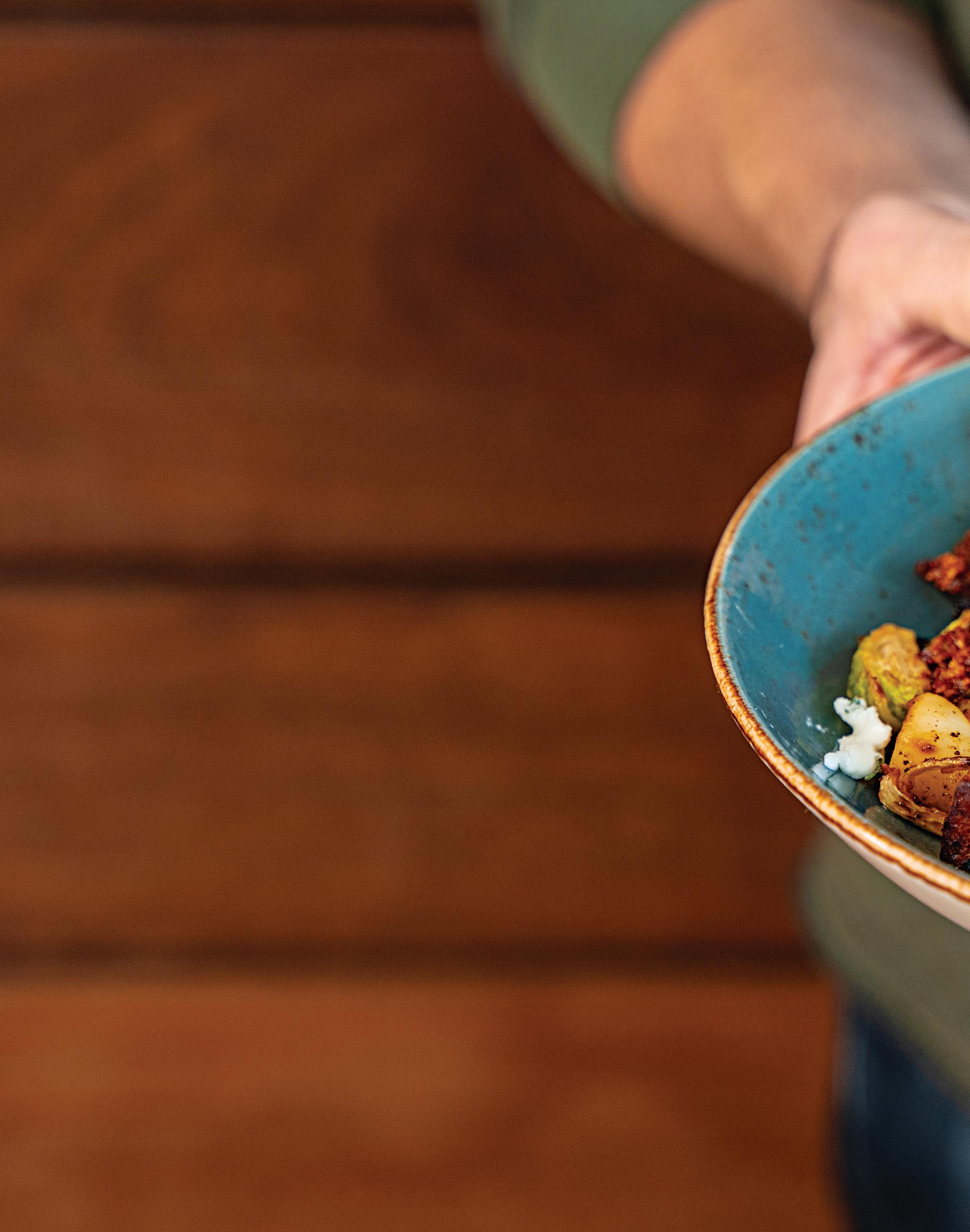
First Watch continues to lead with its values and a long-term mindset of rewarding and winning over guests for the right reasons.
has been around 42 years. But it’s still capable of the occasional watershed moment. And one arrived in 2023 at the daytime leader’s company conference. Will Guidara, who cofounded the Make It Nice hospitality group in 2011 with Daniel Humm, owning and operating famed establishments like Eleven Madison Park and NoMad (he sold his shares to Humm in 2019), addressed the crowd. Guidara has built a speaking empire and teaching model around his New York Times bestseller, “Unreasonable Hospitality: The Remarkable Power of Giving People More Than They Expect.”
Several years later, First Watch chief brand officer Matt Eisenacher says, the company is still talking about Guidara’s presentation. The way he describes it: “We got entranced.”
BY DANNY KLEIN
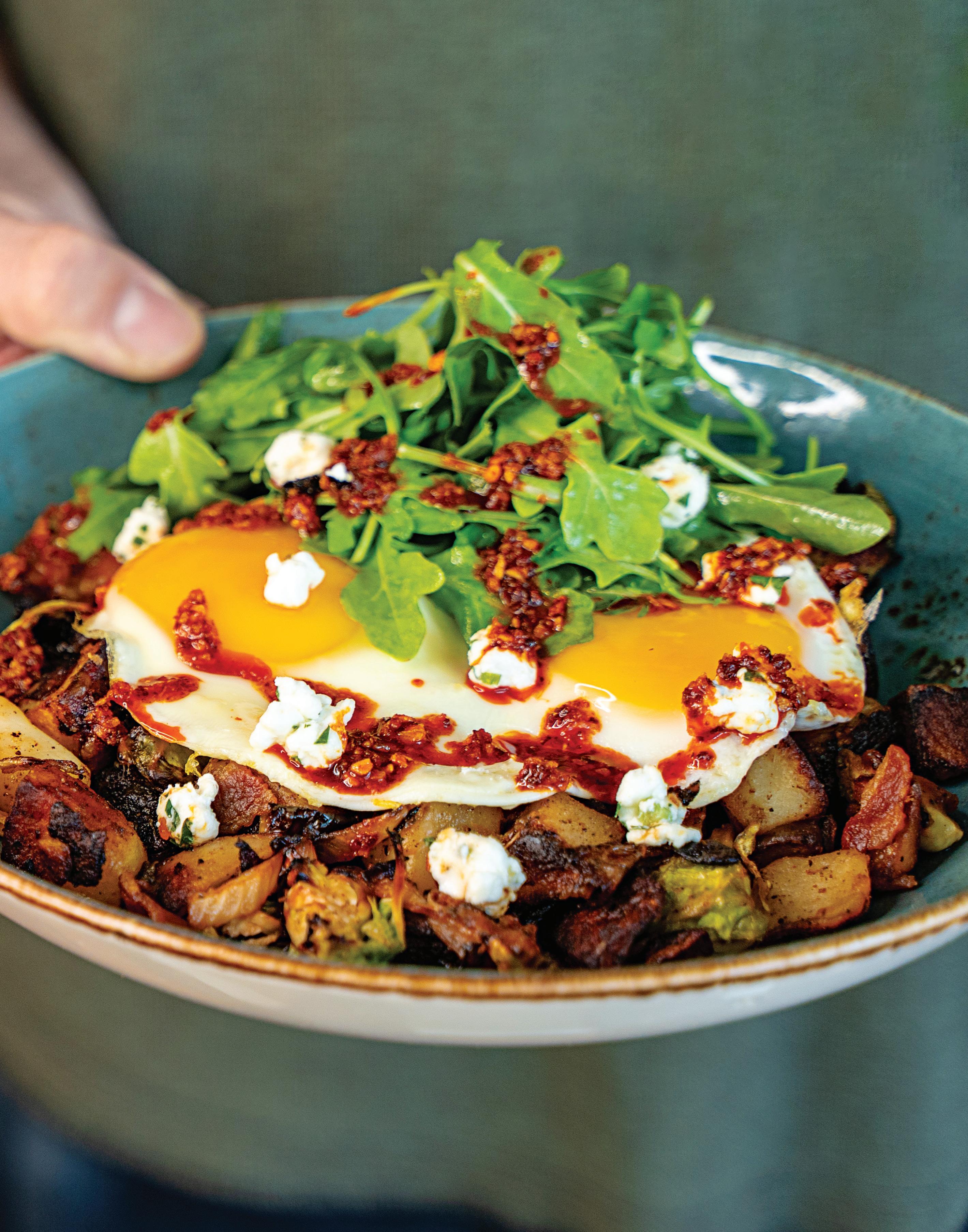
BEING A “NETWORK OF NEIGHBORHOOD RESTAURANTS” HAS BEEN IN FIRST WATCH’S DNA SINCE THE OUTSET. “SOME OF THAT REQUIRES YOU NOT ALWAYS BEING DESCRIPTIVE OF WHAT TO DO AND WHAT NOT TO DO,” SAYS FIRST WATCH CHIEF BRAND OFFICER MATT EISENACHER.
“Small acts [of kindness] create an emotional connection for our customers and build loyalty in ways points-based loyalty programs simply can’t.”

Being more than a place to fuel up, so to speak, isn’t exactly a fresh revelation at First Watch. That’s been part of its ethos since the late Ken Pendery and John Sullivan left Le Peep and founded the brand in 1983 in Pacific Grove, California, named after the nautical reference of a first work stretch aboard a ship—First Watch is a one-shift model, opening at 7 a.m. and closing at 2:30 p.m.
In fact, if you go into any of the 580plus locations and ask a manager if they’re carrying a card in their pocket, they’ll likely pull out a square of paper that outlines First Watch’s values of being kind, rolling up your sleeves, and standing shoulder-to-shoulder. The brand has updated the messaging, as it did in 2022, but the general premise hasn’t adjusted much over the decades.
“Connection back to a purpose,” Eisenacher says.
So this 2023 speech from Guidara unraveled two things: Firstly, the notion of “Unreasonable Hospitality” felt inherently like First Watch to the leaders and GMs gathered in the room. It was reinforcement rather than epiphany. And secondly, what Guidara was speaking to, including a well-worn anecdote of how Eleven Madison Park once served a $2 hot dog to a table of tourists who wanted to try a New York City staple, seemed like a stark separator from some industry-wide happenings. First Watch considered that a good thing.
“I’m sure you can feel it when you walk into a lot of places,” says Eisenacher, who joined the brand in 2019 as SVP of brand strategy from fast casual Piada Italian Street Food, where he was chief concept officer. “Some [restaurants] have gotten a little bit more transactional. Technology can be additive but can also be dangerous. We just fell in love with this idea.”
The “idea” Eisenacher referenced was, in plain terms, how First Watch could deliver elevated hospitality by unleashing managers. Guidara is a big proponent of empowering the people closest to the guest. While corporate can issue mandates and come up with snappy taglines, it’s the customer-facing representatives of your brand who crack the culture code.

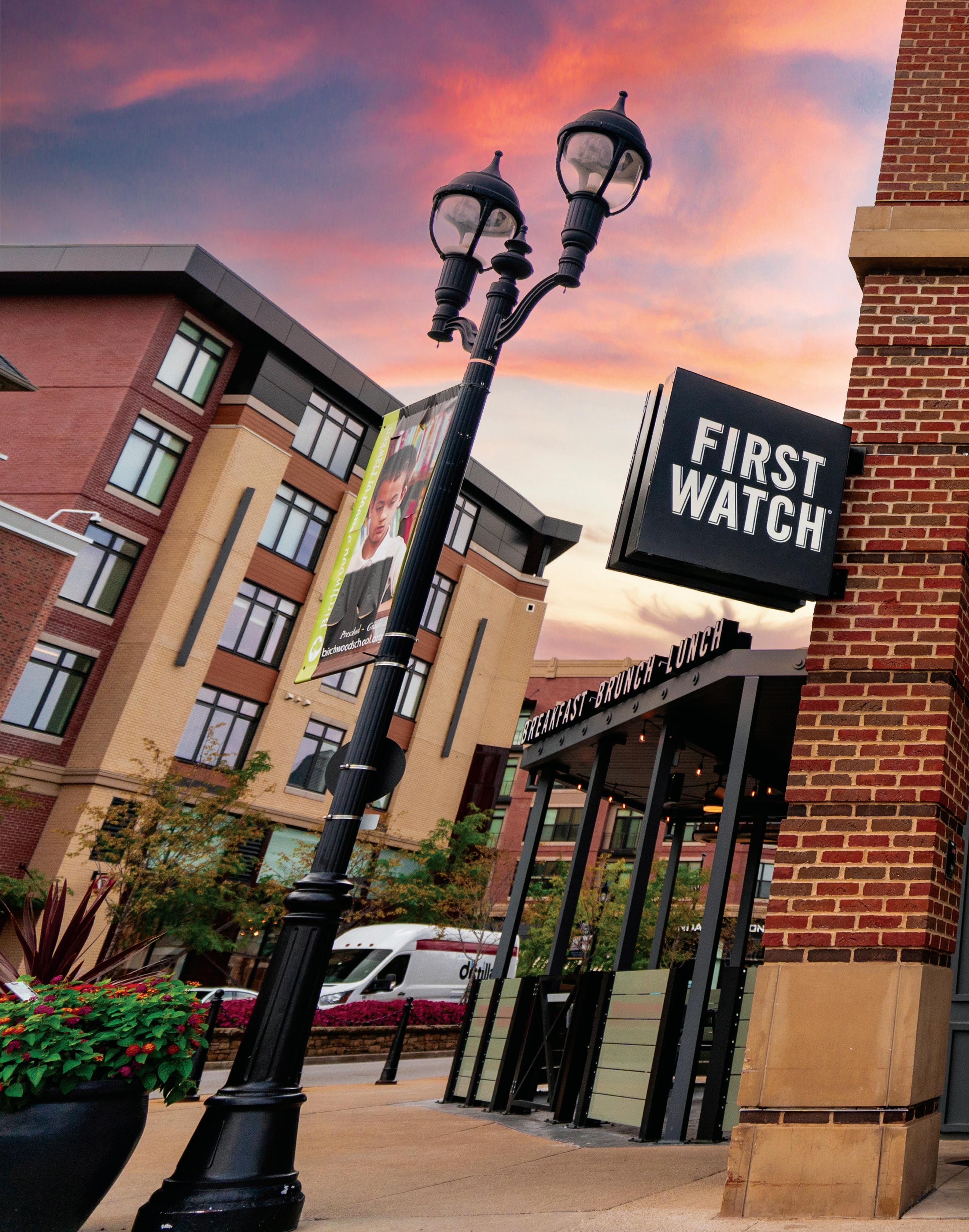
The directive First Watch gave GMs was to go beyond the norm. Use tools and leverage the support of corporate, but tune-in from the trenches.
First Watch has lived this for a while, yet it really came to light publicly in May. The brand had just navigated another muddy quarter. Four of its top five commodities (eggs, bacon, coffee, and avocados) faced cost pressures—a dynamic, CEO Chris Tomasso said, he hadn’t seen in the nearly 20 years he’d been with the brand. Commodity inflation overall was 7.7 percent.
Along with how First Watch managed through and “controlled the controllables,” as Tomasso says, he surfaced a “surprise and delight” mission managers were on. How could in-store leaders reward diners through “surprise” and “acts of kindness” amid a spending landscape where it feels like everything costs more, but people aren’t getting anything extra. Think a free juice, sharable, or even entrée.
Tomasso explained per-person average checks slid a bit in response. However, the goal at First Watch wasn’t to squeeze dollars of guests. Instead, “we are making an investment in long-term customer retention,” Tomasso told investors on First Watch’s Q1 earnings call. “Small acts such as these create an emotional connection for our customers and build loyalty in ways points-based loyalty programs simply can’t.”
The truth is, Tomasso was only glancing at how deep the directive went. Each month, First Wach hosts what it labels, “FARM” (First Watch Academy Restaurant Management). This brings 30–35 high-potential GMs to the brand’s homebase of Sarasota, Florida. Eisenacher says the purpose isn’t to talk about business, but to help leaders develop and explore the company’s roots and values. “We believe as we grow that’s the kind of connective tissues that can spread the culture,” he says.
Every FARM session, Eisenacher brings up “Unreasonable Hospitality” and hands attendees a copy.
A lot of what First Watch talked about at the conference and since is how, as restaurant professionals, you can feel customers’ general unease, if you listen. Whether it’s global issues, economic, or how much dining out is costing them. “The line we continue to use is, we don’t just serve bacon and eggs,” Eisenacher says. “It’s not just about food. There’s a lot of places you can go to do that. We believe firmly, especially in full service, it’s how people feel when they leave. So we really started to lean into this idea to showcase people who are doing that.”
And it fell to individual restaurants to bring it together.
Angela Mitchell, a regional vice president at First Watch who oversees the Virginia market, recalls the conference as an event where everyone in the room understood the assignment. Mitchell has a GM who created a photo backdrop with balloons and decorations for customers and team members. She went out of her way, on her time off, to curate and bring in seasonal decor to celebrate holidays and so forth.
Mitchell was at a crowded, newer First Watch where a front-of-house manager asked a frazzled family if there was anything she could do to help as they waited. The dad jokingly asked for chocolate. She came back with a cup of chocolate chips. Mitchell has seen surprise baby showers and personal celebrations. There was one regular in Richmond who came to First Watch since 2019. It was clockworked to the point where if he didn’t show, his son would call the restaurant to let the staff know he was OK.
More recently, he moved into assisted living. So now, the GM either drives the food over herself or sends somebody to bring him his order. “It’s
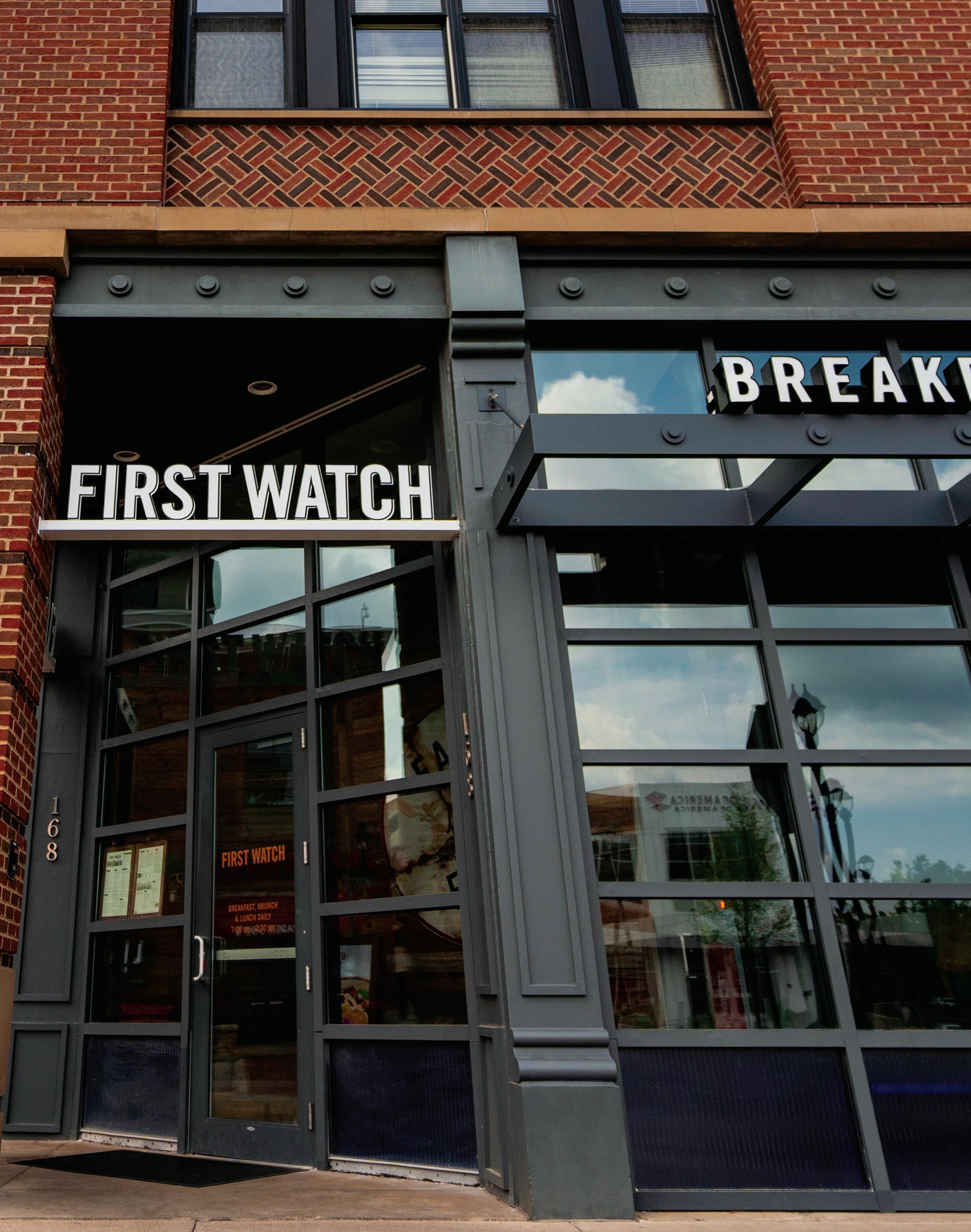
IN MAY, FIRST WATCH NAVIGATED ANOTHER MUDDY QUARTER, WITH FOUR OF ITS TOP FIVE COMMODITIES (EGGS, BACON, COFFEE, AND AVOCADOS) FACING COST PRESSURES AND INFLATION OF 7.7 PERCENT. YET, THE BRAND “CONTROLLED THE CONTROLLABLES” AND EVEN SURFACED A “SURPRISE AND DELIGHT” MISSION TO REWARD DINERS THROUGH “SURPRISE” AND “ACTS OF KINDNESS.”
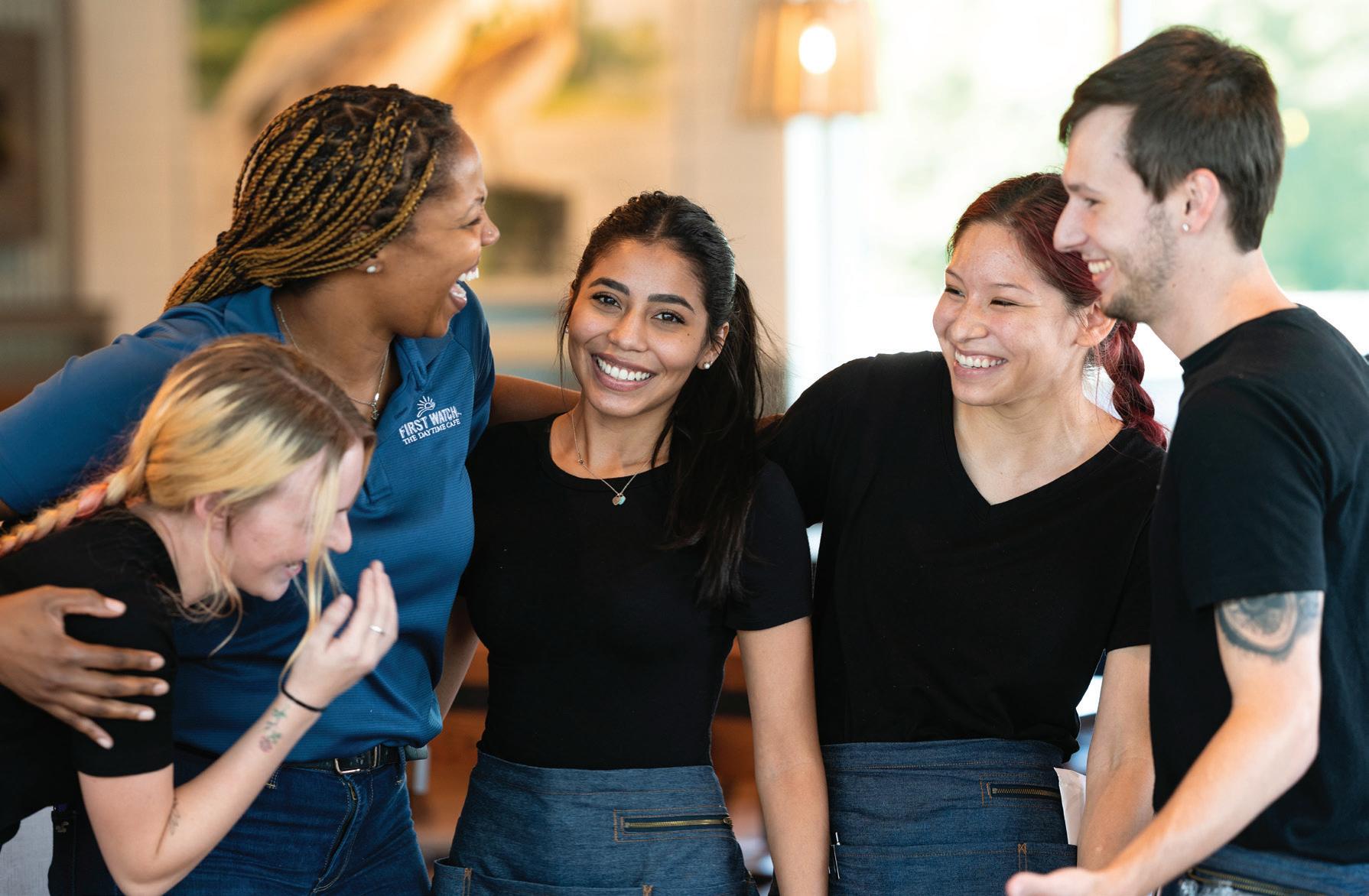
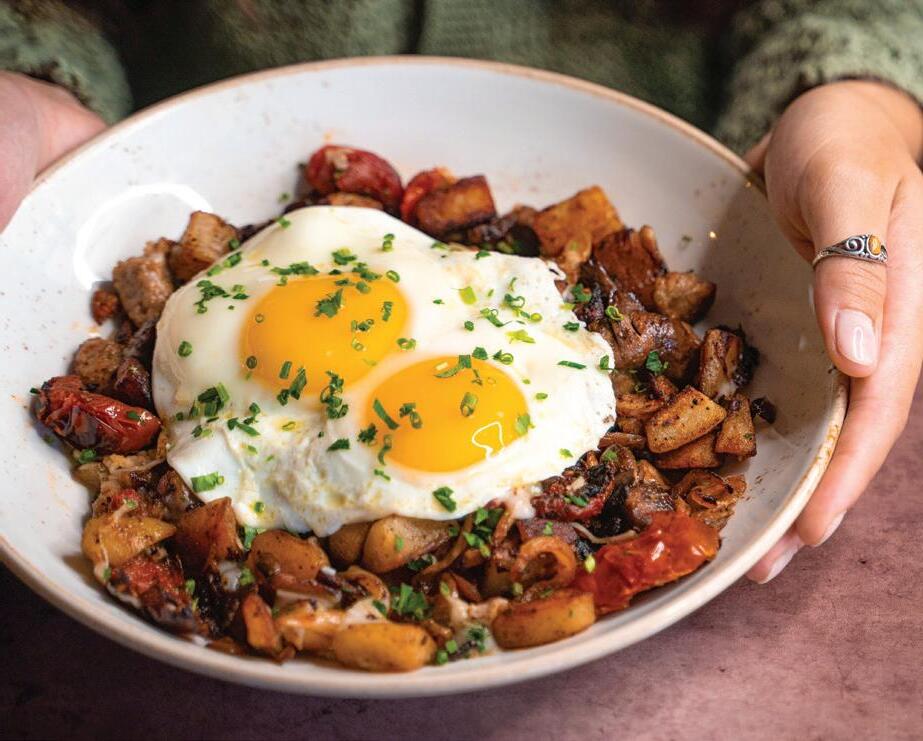


all based on connections,” Mitchell says.
Christine Pomella, director of operations in the Greater Pittsburgh, Pennsylvania, area, says people have had first dates in her stores; become engaged; they’ve returned married; later with kids; to honor their birthdays and family additions. “We have to realize people choose to spend their money here,” she says. “They can choose anywhere. But we should be thankful that they’re coming to us as opposed to a neighboring restaurant.”
One thing Tomasso, who arrived at First Watch in 2006 as CMO before elevating to president in 2015 and CEO in 2018, often speaks about is First Watch’s long-term outlook. Whether it’s avoiding heavy pricing action or “shrinkflation,” the brand absorbs macro blows in favor of holding steady. How do you manage through uncertain times? By focusing on the customer, he said in Q1. That and deliver “exceptional value and meet the customer where they are.”
The blueprint at First Watch has long been to propel growth by grabbing share. Anything it can do to foster loyalty, frequency, and remind guests of its differentiators will carry more weight than quick fixes, like discounts.
That’s unfolding today across three efforts—optimizing third-party delivery, amplifying “Invest in the Guest’ initiatives, like a KDS rollout and waitlist app, and the empowerment of leaders “to make days bright for customers.”
Mitchell says you could see this approach in past eras, like the Great Recession. Those days, she recalls, management talked about leaning into service as sales softened. COVID was similar. The brand didn’t close a single unit permanently due to the crisis and stood up an online ordering platform and third-party delivery in a matter of days. When it first made the call
METHODOLOGY: The FSR Top 30 Report was created in partnership with Datassential and its annual Datassential Top 500, which ranks the largest restaurant chains in the U.S. Chain operators were invited to share unit and systemwide sales figures, and Datassential supplemented those numbers with data from its analytics platforms, including and especially the Datassential Operators platform, as well as Concept Testing and Brand Performance. Publicly available brand data from securities filings, investor research, and franchise disclosures also informed Datassential estimates. Where specific chain information was not available, estimates were made based on growth rates seen in the industry overall and among similar chains.

to shutter 300-plus corporate locations, it put employee care under a microscope, committing to continuing all furloughed workers’ existing healthcare benefits and to covering 100 percent of out-of-pocket costs, co-pays, and deductibles for any medical visits related to COVID.
Holistically, though, whatever efforts First Watch made through the pandemic and on the rebound, hospitality remained at the forefront.
“These are the times,” Eisenacher says, “we believe, when great brands separate themselves by making the hard decisions.”
Now, with inflation, tariffs, and who knows what else lies ahead, Mitchell says First Watch wants to ensure it stays true to its principles and puts value on the plate. One example being the chain’s decision to bring back free coffee and water for waiting customers. That’s an offering that fell off during COVID and hadn’t returned. But some restaurants started doing it anyway. Corporate listened to operators and made it a larger initiative again.
Another was to double the portion of meat in one of its top-selling items, the Tri-Fecta. The timing, given rising bacon costs, wasn’t ideal and, combined with “significant demand shift,” pressured First Watch’s margins. Tomasso wasn’t going to let that setback stall progress, either. “We believe taking selective steps like this will ultimately lead to increased customer frequency at the short-term cost of a tighter margin for this high mixing item,” he said in Q1.
Mitchell agrees it was “well worth it” from what she’s heard on the customer side. “It’s a wow factor,” adds Pomella of the overall surprise effort. “I think it’s just, ‘can’t believe you’re doing this. I can’t believe in this current economic climate you’re giving more when others are either taking away or adding to the cost of things.’ That sets us apart. It makes people want to come back because it’s a more caring environment. It’s not just a business.” Eisenacher elaborates First Watch’s surprise-and-delight mindset goes beyond giving away food. There’s a First Responder Program that’s far exceeded what the company set out to
do—say thank you to people by giving them a mug they could use for future, free refills of coffee.
Somebody who once worked with Eisenacher at Piada told him a story of sitting at a table in a Columbus, Ohio, First Watch. Now working for a nonprofit supporting first responders, he was chatting about the mission when a server overheard. They came over, thanked him for his efforts, and brought out the engraved Yeti mug with a little slip inside offering appreciation. He wrote to Eisenacher about the experience.
There are also things like a “Baby’s First Brunch” onesie employees hand out. It might seem like a small gesture, Eisenacher says, but those “acts of kindness” dot social media.
“It would be easy for Chris [Tomasso] or I to stand in front of 1,000 people and say, ‘Here’s a program, here’s what you’re going to do.’ We didn’t do that,” Eisenacher says. “We actually gave five, six, seven tools, and said, ‘Hey, you know your restaurant. You know what’s important. You might be by an Air Force base. You might be by a fire station. You might be by a school. You might have people who are walking in for their first breakfast or brunch after getting married or engaged. We have a lot of those stories.”
It came down to trusting First Watch’s culture, Eisenacher says. This isn’t an initiative you can write an SOP around or deliver at scale. It had to feed itself from the bottom up. Being a “network of neighborhood restaurants” has been in First Watch’s DNA since the outset. “Some of that requires you not always being descriptive of what to do and what not to do,” Eisenacher says.
First Watch didn’t tell restaurants they had to hand out mugs to first responders. The option was there and, before long, Eisenacher was looking at weekly reports on how many were being ordered. “They ran with it,” he says, “because I think they were inspired and we’re a very genuine, values-based organization. It was just one of those programs that fit our values.”
First Watch also learned through this wider experience breakfast is per -
sonal. People are starting their days off and looking ahead. It’s generally a social experience with an air of optimism. Something Guidara espouses is restaurants need to define moments, notice them, and be in the restaurant to see what unfolds. And employees must feel encouraged by management to do what’s right before the chance evaporates.
“He was preaching to empower the people who are closer to the customers to be able to feel like they’re allowed to act on those moments,” Eisenacher says. “That’s the kind of environment we created at our company conference.”
Eisenacher says First Watch hasn’t done this to drive traffic quarter-toquarter. While the company believes that will happen organically and in time, when fleeting customers become regulars, the idea was to lead through values and pull an entire organization up. He isn’t a heavy social media poster, but he scrolls through these examples happening in real time; his feed is full of them.
Mitchell sends weekly emails to her team, takes pictures, and hits LinkedIn to showcase as well. “It’s just really about celebrating the unique ideas general managers come up with,” she says. “And then, by sharing it with everybody, it kind of inspires people to do their own thing and whatever it is they’re close to.”
Pomella says “acts of kindness” extend internally, too. She had a manager training where the prospective employee walked into a room with coffee and muffins. “We do the same thing with new hourly team members,” she says of creating a welcoming environment. “Yes, this is a job. Yes, it’s work. But we want to thank you for choosing us as the employer. Because, again, you can go across the street to X restaurant, and you can be a manager, or you can be a server, or you can be a cook. But for whatever reason, you chose us, and we want to thank you for choosing us.”
Eisenacher adds, “If you made someone smile, you know you’ve done your job, and it’s all about making someone inspired to make their next visit to a First Watch when they’re deciding to go out to breakfast.”

8 Hour Long


Durable Design






BY SATYNE DONER
Firebirds veteran Lisa Kozloff reflects on 25 years of brunch, babies, and bold new menu ideas.
AFTER 25 YEARS with Firebirds Wood Fired Grill, Lisa Kozloff has worn many hats—leader, innovator, and brunch mastermind—but perhaps none more defining than “mom.” Her journey as one of the brand’s foundational voices has been deeply shaped by motherhood, influencing everything from how she builds teams to how she builds menus.
Today, she serves as the brand’s vice president of beverage and special projects, taking the helm of cocktail creations like the Hail Mary, Sparkling Diamond, and Fired Up Coffee. The NextGen steakhouse concept is known for its happy hours, brunches, and afterdinner drink menus, but when Kozloff started as a bar manager all those years ago, there were no cocktails on the menu.
“My journey with Firebirds has come full circle. I was the bar manager at our first location, and we didn’t have anything, so I got to come up with some of the foundational cocktails, and I found that type of work inspiring,” Kozloff says. “As the years went on, I served in more of an operational role, but I think it’s neat that I have come back into the beverage side of things and started slinging drinks behind the bar again.”
But she wasn’t just creating drinks back then—she was also a newlywed, who got married a month before she started at Firebirds. Kozloff was juggling her blossoming career, a thriving per -


sonal life, and, before she knew it, a family. But she found inspiration in motherhood, and these experiences would go on to inspire countless menu items, operational tweaks, and, most importantly, empathy in the workplace.
“We always want to be the most hospitable to our guests, but once you have a child, your level of empathy and understanding is supercharged. Whether it’s a family coming in with a fussy toddler or parents coming in for date night, you
begin to feel the importance of hospitality and the impact it has,” Kozloff says.
This level of hospitality and care doesn’t just extend to patrons—employees feel it, too. Leaders who have “walked the walk,” according to Kozloff, can better understand and support their employees who are in the throes of parenting.
“It can be difficult for employees, especially with young children at home. I’ve been there, and being a parent just teaches you how to be more adaptable

to your circumstances and keep a lot of plates spinning at the same time,” Kozloff says. “For leaders, you do become much more understanding. You’ve walked in your employees’ shoes. You know the position they’re in and can better support them along both their professional and personal journey.”
Some of the brand’s most critical learnings have come from its busiest day of the year: Mother’s Day. One key takeaway: Moms want to start their brunch celebrations earlier. According to OpenTable, 10 a.m. bookings grew by 19 percent from 2023 to 2024. In 2025, Firebirds broke its daily sales record companywide by doing this; now, the brand is looking at making this a permanent fixture, testing it in 16 restaurants nationwide.
“When we open earlier for brunch, this allows us to welcome more people and more moms to come in and enjoy us,” Kozloff says. “Brunch is a growing category, and it’s very popular with our guests. Operationally, we’re working hard to follow up on everything from reservation management to menu produc-
AHEAD OF THIS YEAR’S MOTHER’S DAY BRUNCH SERVICE, FIREBIRDS DEBUTED ITS BRAND-NEW BRUNCH MENU, INFUSING FAMILYFRIENDLY OFFERINGS WITH BOLD FLAVORS AND SIGNATURE BEVERAGES FOR PARENTS.
tion and staffing to ensure we can focus when it’s game time and honor our guests not just on Mother’s Day, but year-round.”
Ahead of this year’s Mother’s Day brunch service, Firebirds debuted its brand-new brunch menu, infusing family-friendly offerings with bold flavors and signature beverages for parents. In its first few weeks, the revamped daypart delivered positive trends, serving as a launching pad for innovation for the rest of the year.
Hot honey chicken biscuits, brunch burgers, donut holes, and French toast dotted the brunch menu, with the latter being the most popular option for both adults and children. Kozloff states that inviting families into the home office for testing played a crucial role in the research and development of these innovative products.
“Moms, dads, and children were invited to tasting panels to go through our reimagined brunch menu and give us feedback,” Kozloff says. “We didn’t have a kids’ menu for brunch before this, so it was exciting to bring in new dishes
that reflect our Firebirds’ image and satisfy what our guests are craving.”
On the beverage side of things, Kozloff drove innovation past mimosas and Bloody Mary offerings and opted for what she calls “sparklers,” or bubbles. This includes spritzes like the Paradise City, with a charred lemon garnish reminiscent of the wood-fired grill. There’s also the Salted Caramel Cold Brew mocktail, representing a new line of nonalcoholic beverages for customers.
For Kozloff, new launches are like getting a new outfit—it’s exciting to show them off. The “Savor the Season” limited summer menu, which debuted in late June and will stay until the end of August, features steak frites, shrimp and grits, and Butcher’s Meatloaf, alongside refreshing cocktails like the Strawberry Cucumber Margarita and Cherry Old Fashioned. These cocktail offerings represent a new project of Kozloff’s: expanding the back-bar options for guests by 46 percent.
From leading the bar program at its first restaurant to now overseeing beverages in its 60-plus-unit portfolio, Kozloff continues to focus on creating an engaging restaurant experience for customers, pulling inspiration from her journey as a mother and career woman, as well as from broader industry trends and learnings from the popular Mother’s Day brunch. She is a proud mom, a proud mentor, and a proud Firebirds team member since day one.
“It takes a village. When I was a general manager, I’d drop my daughter off at daycare and go to work a 12-hour shift,” she adds. “This industry is a great place to grow your career, but mothers out there need to remember to take the time to care for themselves and rest when they can. Enjoy your family, enjoy your career. My daughter is 18 now, and she loves testing out new menu items with me. You can have both.”
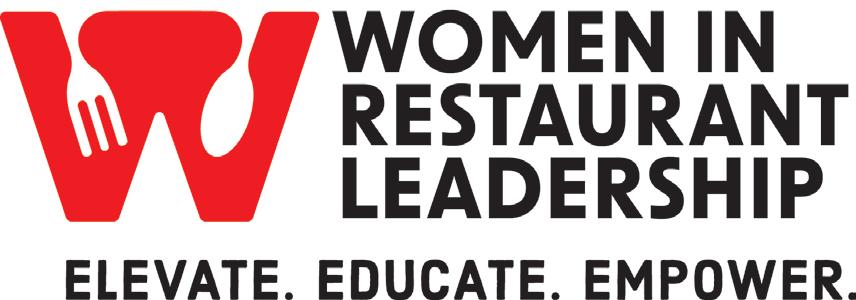
Open for 18 hours, the dive-bar-turned-bustling restaurant with three concepts under one roof features southern-style biscuits, NY-style pizza, and Colorado-style beer.
Shader moved from Central Florida to Colorado not for its flourishing food scene, but to play football for the University of Colorado Boulder. In 2000, he was considered one of the top high school players in the state, but, he says, “After a ton of football injuries, I quickly realized that I needed to figure out something else to do.” Outside of sports, Shader had one other passion: restaurants.
That shift in focus led Shader to his first unexpected break into the restaurant world—one that began midair. At age 20, Shader and his friends were on a plane to Las Vegas for a spring break trip. “I sat next to a guy who, at the time, had a bar in downtown Denver, which was really popular and well-known, and he was in the process of opening a French restaurant,” says Shader. By the time the plane touched down, Shader had both invested in the new eatery and landed an internship.


OWNER: Drew Shader HQ: Denver
CUISINE: American UNITS: 8
Twenty years ago, when this inair handshake deal took place, Shader says that the restaurant industry in Denver mostly consisted of steak -
houses, and working with French cuisine would be a nice change. This internship was Shader’s entry into the restaurant industry, having worked in construction during high school. “I was a pretty hardcore football player and that was my life,” he says. “So [this job] was my first intro to restaurants and the hospitality world and I was immediately hooked from day one.”
Shader, only recently of legal drinking age himself, decided to purchase a neighborhood dive bar from its bankrupt owner in 2004 after spending a year hosting, working the kitchen line, and serving. The bar, called Atomic Cowboy, had only been open for two months. It’s located in
the East Colfax neighborhood, which he says was “an up-and-coming area of Denver, but traditionally pretty seedy, and had turned into more of a place where college kids were renting homes.”
Serving college kids and local residents, the bar soon became successful. After three years of owning and operating his own bar, he says, “I needed something else to keep me motivated. So, adding food, which was really my passion more than the bar, was the natural fit.”
In 2008, he added New York-style Fat Sully’s Pizza to the mix, served by the slice. At first, food was introduced just to sell to the busy bar’s typical customers. Once diners began arriving just for the pizza, Shader decided to transition the establishment. “We went from the dive
bar that opened at 4 p.m. to the dive bar that had great pizza and delivered great pizza,” he says.
In 2010, Shader was driven by the food truck resurgence to begin his own side gig. He introduced Denver Biscuit Company, leaning into his roots by serving southern-style biscuits and biscuit sandwiches. He began to sell the biscuits out of the bar as well. “There was really no intention of matching [the three brands] all together,” he says, “but it just worked out that way.”
He opened a second Atomic Cowboy location in 2012, which continues serving up brews, pizza, and breakfast biscuit plates for 18 hours a day.
“There’s a lot of complexity in operating three different concepts under one roof,” says Shader. “But at the same time, there’s a lot of benefits. We serve breakfast, lunch, dinner, we go through happy hours, we go through late night. We are kind of a one-stop-shop for whatever you’re looking for.”
Today, Atomic Cowboy catches the attention of customers with its flashy neon signs and kitschy decor. The interior is a combination of alien and Western themes, with an all-around retro look and splashes of the brand’s signa-

ture bright red. The aesthetic, imagery, and name came from the original owner, but Shader says “We’ve just run with it over the last 20 years.”
On the exterior brick of the original Atomic Cowboy location hangs a crimson neon sign featuring the brand’s logo—the letters ‘AC’ underneath two rolling pins crossed like an X. “I love raw neon,” says Shader. “I found a great artist here in Denver who does raw neon, so we’ve always done a lot with that. We’ve just expanded upon the original Western and alien vibe.”
Over the years, the menu has expanded greatly. The Fat Sully’s menu now features a lineup of late-night favorites, such as chicken wings, tenders, and the brand’s show-stopping Lights Out Burger, rated Denver’s Best Burger by Westword. Denver Biscuit Company was also voted Westword’s Readers’ Choice Best Breakfast in Denver 2024, and the menu includes a variety of takes on the classic biscuit sandwich, incorporating French toast, Korean BBQ, and a Cuban sandwich among its many offerings.
Shader says that the cuisine innovation was spurred on by his motivation to make great and fun food. “How great can we make this one slice?” he says. “That’s how we’ve taken everything along the
WHAT STARTED WITH A SPRING BREAK HANDSHAKE IN THE AIR TURNED INTO A MULTI-CONCEPT BRAND KNOWN FOR NEON LIGHTS, SOUTHERN BISCUITS, AND PIZZA SLICES WITH ALIEN-MEETS-WESTERN DECOR, BREAKFAST-TO-LATE-NIGHT MENUS, AND A BURGER CALLED “LIGHTS OUT.”
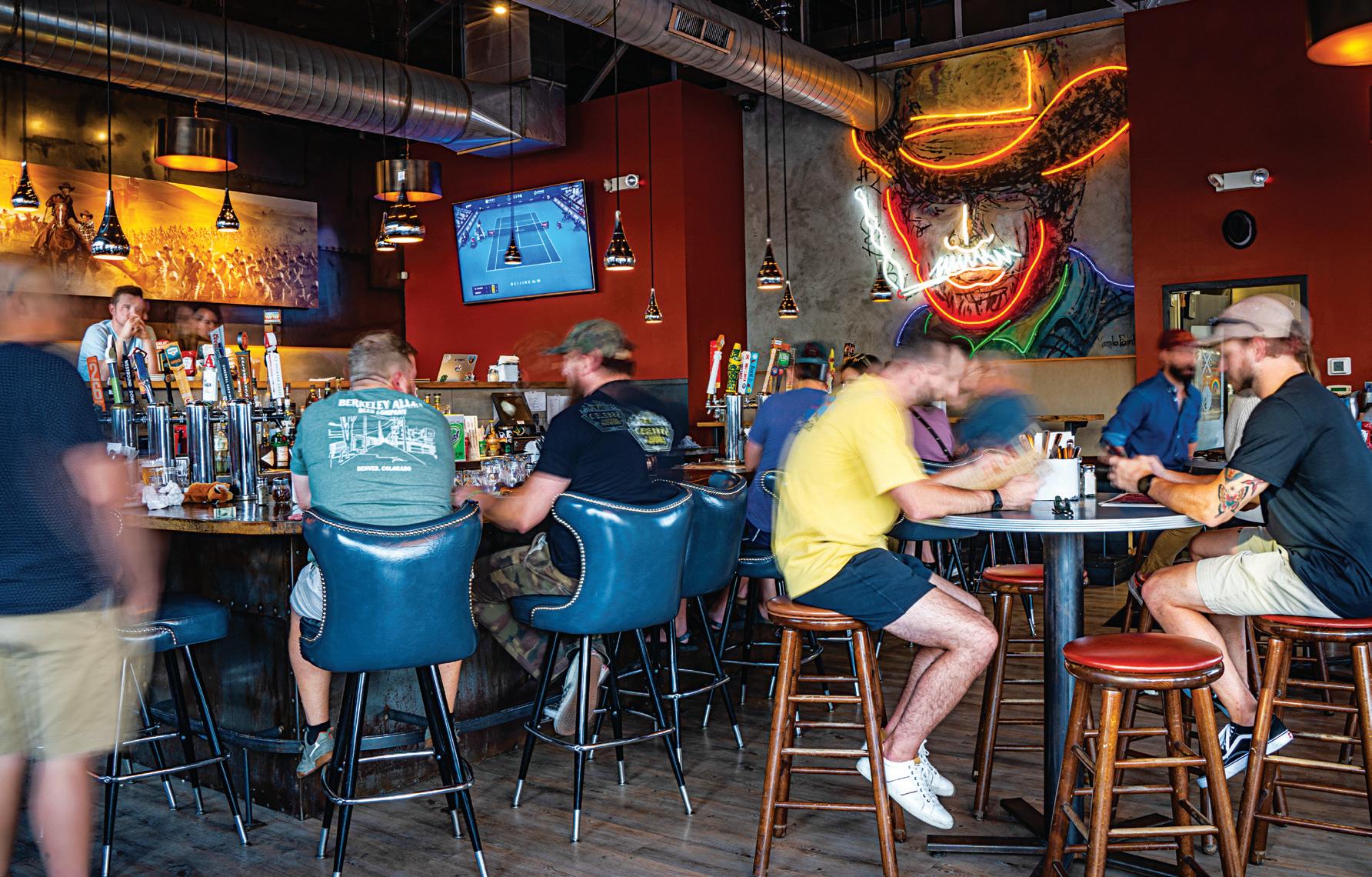
way. We were going to make a biscuit, and do three or four biscuit sandwiches, but every piece on [the biscuit had] to be amazing. That’s how it started, and that’s how it’s continued.”
Everything is made in-house, from the biscuit batter to the pizza dough. On this, Shader says, “We talk about simple perfection internally, and that’s kind of been the backbone of it.”
In 2013, Atomic Cowboy was featured in Guy Fieri’s “Diners, Drive-Ins, and Dives.” In the episode, Fieri is led through the entire biscuit creation process, from stirring in the buttermilk to serving up a house-made sausage gravysplattered plate. The national spotlight only reinforced Shader’s commitment to perfecting the food behind the fame. Shader consulted with a baker for two years to develop the biscuit and the pizza dough. “I’m definitely not a chef, and I don’t pretend to be,” says Shader. “I just feel like I know what’s good, what people like, and that’s been a thread throughout. I’ve worked with great chefs along the way to make the menu what it is today.”
Atomic Cowboy has also stayed true to its bar roots, and sells a wide selection of Colorado craft beers. Still, the dive bar-turned-popular restaurant is probably the only place in the state that offers a $6 Pabst Blue Ribbon and Jim Beam deal and champagne on tap under the same roof. It also still sells a pizza slice and beer combo, which has been on the menu for the past 15 years.
In 2020, Atomic Cowboy opened two locations in the Kansas City metro area, one of which is still open today in Overland Park Downtown. There are also seven locations in the Centennial State, in Denver as well as nearby Colorado Springs, Centennial, Golden, and Aurora. The brand will also be opening a store in the Denver International Airport by January 2026.
After 20 years of business, Shader says the brand’s success is easiest to manage if he “focuses on the small stuff. Focus on the food, focus on whatever you’re doing, down to the very smallest detail. If you do it well, all that other [success] will happen.”
Belgioioso .
belgioioso.com/foodservice
Fintech
813-207-5520 | fintech.com
Ghirardelli .
ghirardelli.com/professional
J&J Snacks
jjsnackfoodservice.com/request-free-samples
KPS Global
682-317-5341 | kpsglobal.com
Malaysian Rubber
myrubbercouncil.com
Meat & Livestock Australia
foodservice.aussiebeefandlamb.com
866-SYRUP20 | monin.us
Polly-O Cheese
833-476-5596 | polly-O.com
Progressive Commercial
888-806-9598 | ProgressiveCommercial.com
Stratas Foods
888-404-1004 | stratasfoods.com
Texas Pete
TexasPeteFoodservice.com
VITO Fryfilter
887-859-0398 | vitofryfilter.com
Advertising Inquiries
Eugene Drezner
VP, BUSINESS DEVELOPMENT edrezner@wtwhmedia.com | (919) 945-0705
Amber Dobsovic
NATIONAL SALES DIRECTOR adobsovic@wtwhmedia.com | (757) 637-8673
Edward Richards
NATIONAL SALES DIRECTOR erichards@wtwhmedia.com | (216) 956-6636
Tom Boyles
NATIONAL SALES MANAGER tboyles@wtwhmedia.com | (662) 607-5249
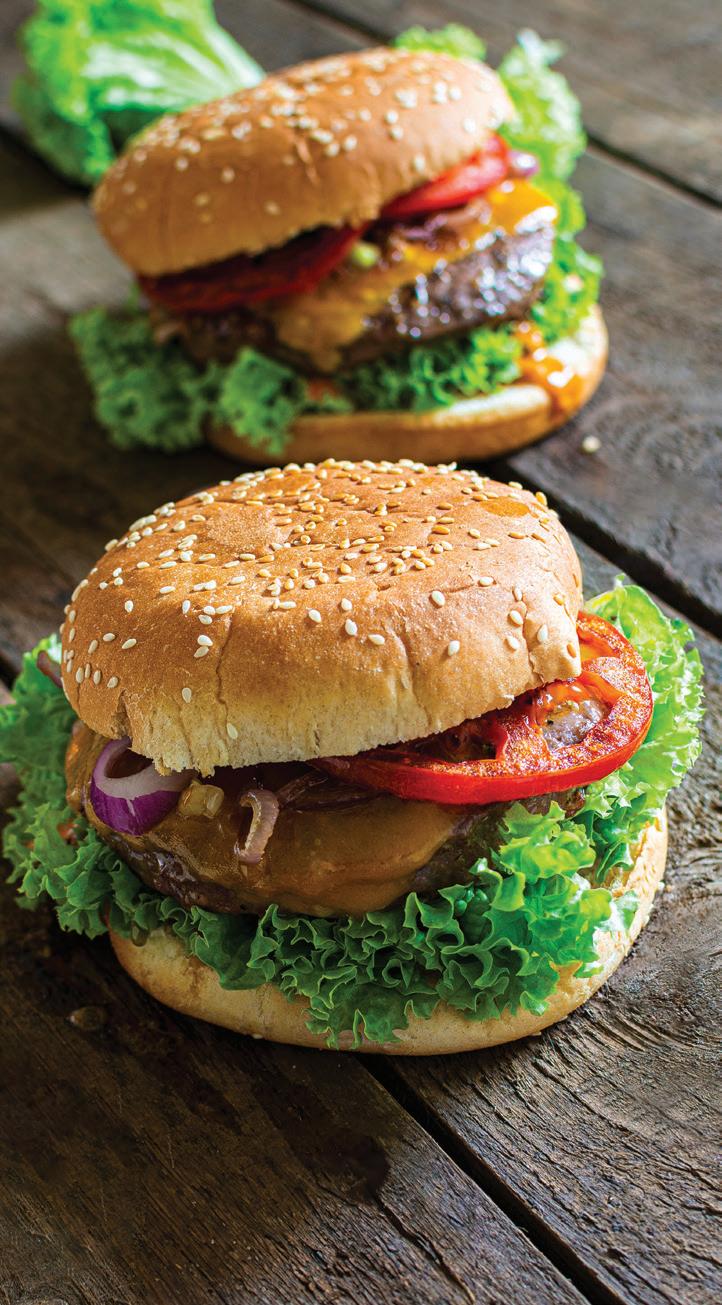


DANIEL DeLEON
ROLE:
CEO & President
BRAND:
Grumpy’s
Restaurant
LOCATIONS: 5
FOUNDED: 1999
HQ: Orange Park, FL
In an industry where burnout and turnover are often the norm, Grumpy’s Restaurant is proving that putting people first isn’t just good ethics—it’s good business. Under the leadership of president and CEO Daniel DeLeon, the Floridabased diner concept— which began franchising in 2019—has built a workplace culture rooted in empathy, opportunity, and community. As the brand eyes expansion across the Southeast, DeLeon reflects on the company’s culture-first foundation.
BY CALLIE EVERGREEN


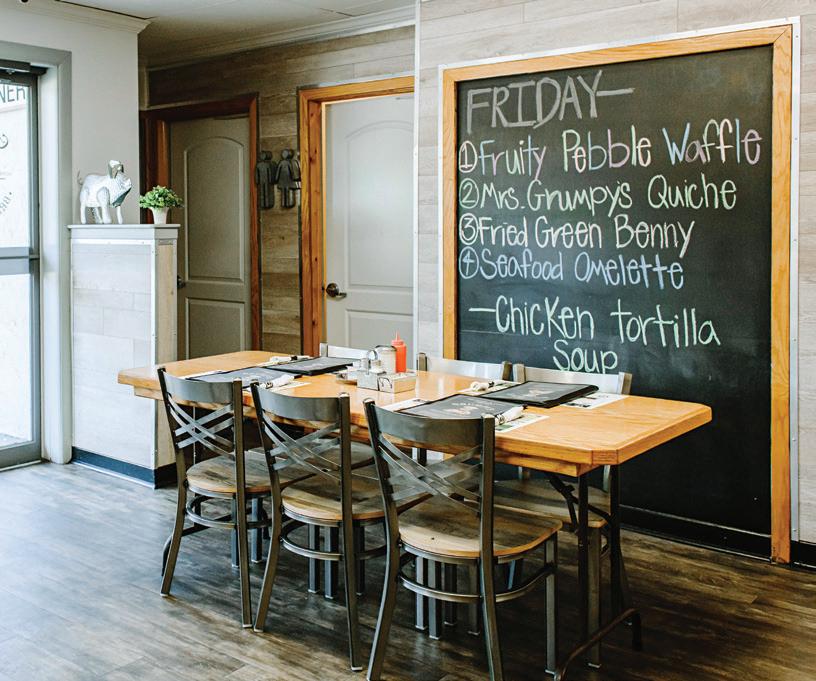
What steps have you taken to build and sustain Grumpy’s familial culture?
From the start, I’ve focused on building an environment where people are family and feel respected, supported, and empowered. We operate with transparency and lead with heart. Our “people-first” approach includes a true open-door policy, celebrating milestones, promoting from within, and ensuring our team has the tools to grow personally and professionally. Closing at 2 p.m. each day reinforces our commitment to work-life balance, something rare in hospitality.
How do you define leadership in a fullservice restaurant setting, and how has your approach evolved over time?
Leadership in restaurants isn’t about titles, it’s about presence. It means showing up, setting the tone, leading by example, and genuinely caring about your people. Early on, I was laser-focused on systems and structure, but I quickly realized that great culture drives everything. Now, I define leadership as the ability to lift others, listen with intention,
and develop future leaders. Empowerment, empathy, and accountability are at the core of how we lead today.
How do you ensure the same strong culture travels with each new franchise location?
We don’t just hand over a manual, we share a mission. Our franchisees go through handson training, are embedded with our corporate team, and are supported every step of the way. We make sure they understand that culture isn’t a checklist; it’s a daily commitment. We look for partners who lead with heart, value community, and treat their people like family—because that’s what Grumpy’s is all about.
What are you most proud of as CEO of Grumpy’s, and what still drives you every day?
I’m most proud of the lives we’ve impacted— our team members who’ve grown into leaders, our franchisees who’ve built thriving businesses, and the communities we’ve been able to serve. Grumpy’s isn’t just a restaurant, it’s a platform to make a difference in people’s lives. That purpose keeps me hungry for more.











BelGioioso Sliced Provolone delivers a mild, creamy flavor with a satisfying bite and a smooth, velvety melt. Always in season, it’s the perfect versatile addition to elevate any menu.



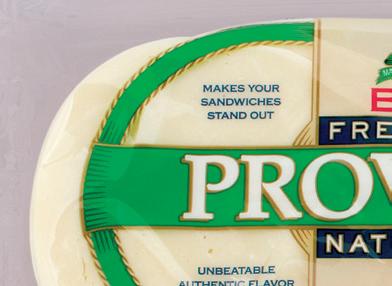
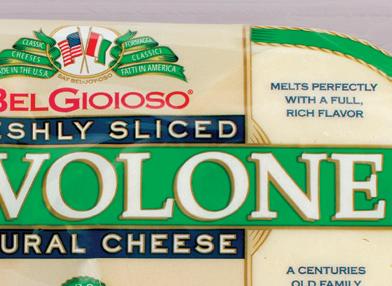




Beef and Lamb from Australia ticks all the boxes for today’s operator.
As a world-leading red meat producer and exporter, Australia delivers much more than just meat. We also deliver real advantages to foodservice professionals around the globe.
ALL YOUR RED MEAT NEEDS:
Consistent, high quality
Year-round supply of chilled and frozen cuts
Trimmed to spec for maximum yield



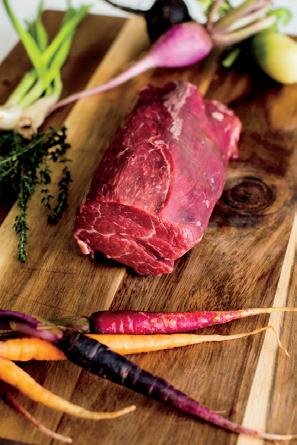
World-leading traceability systems
Operational and marketing support
Availability in US supply chains



